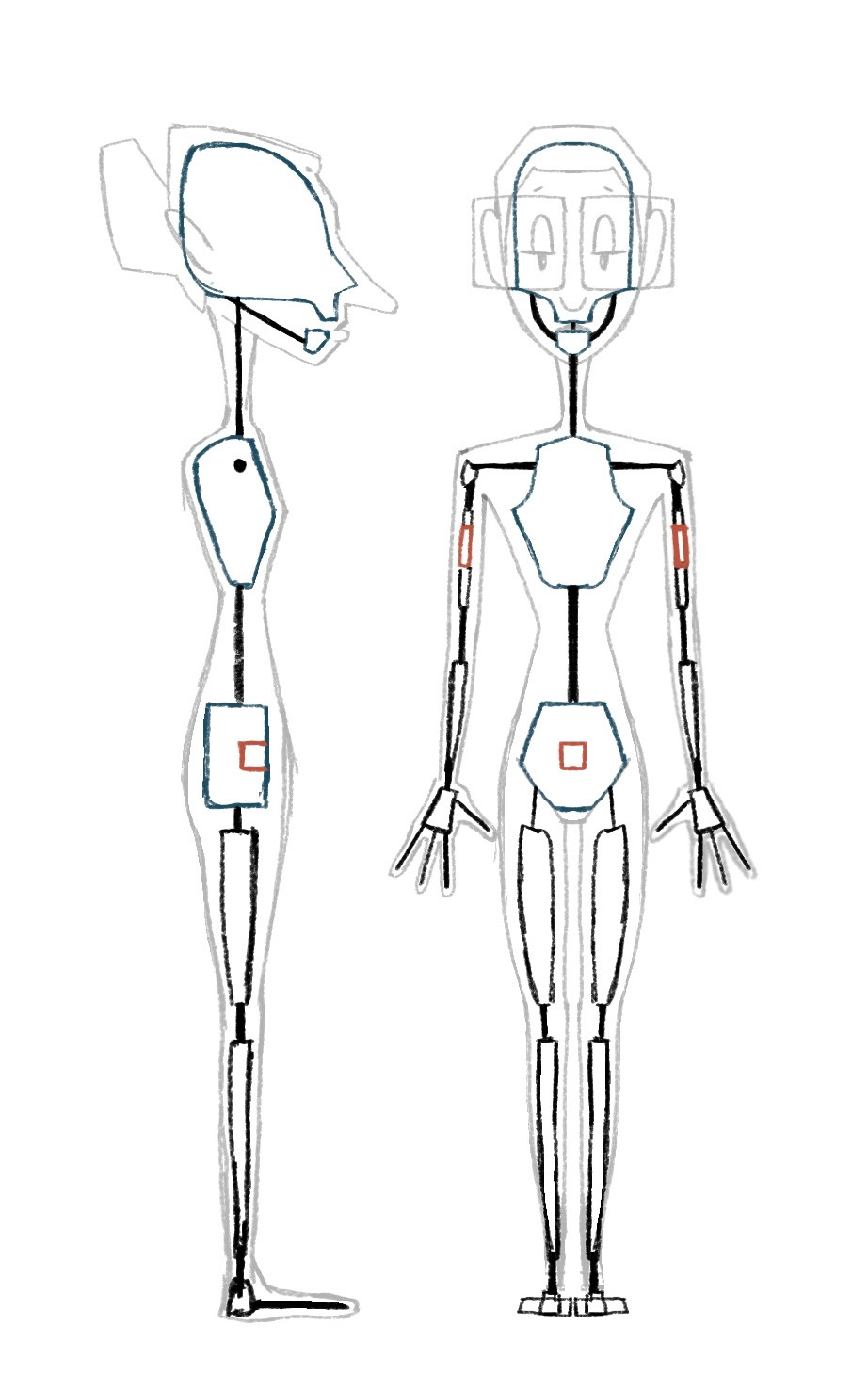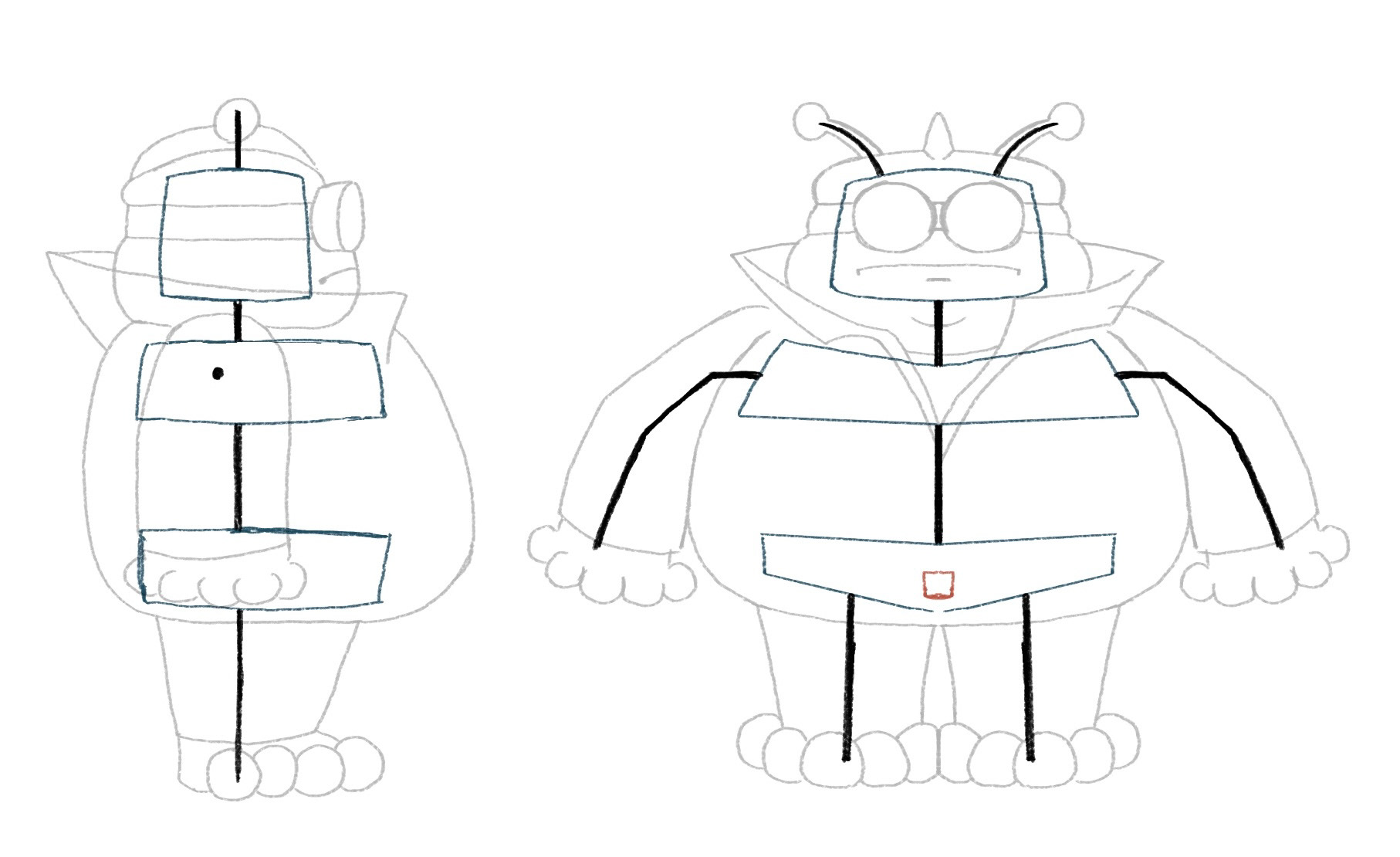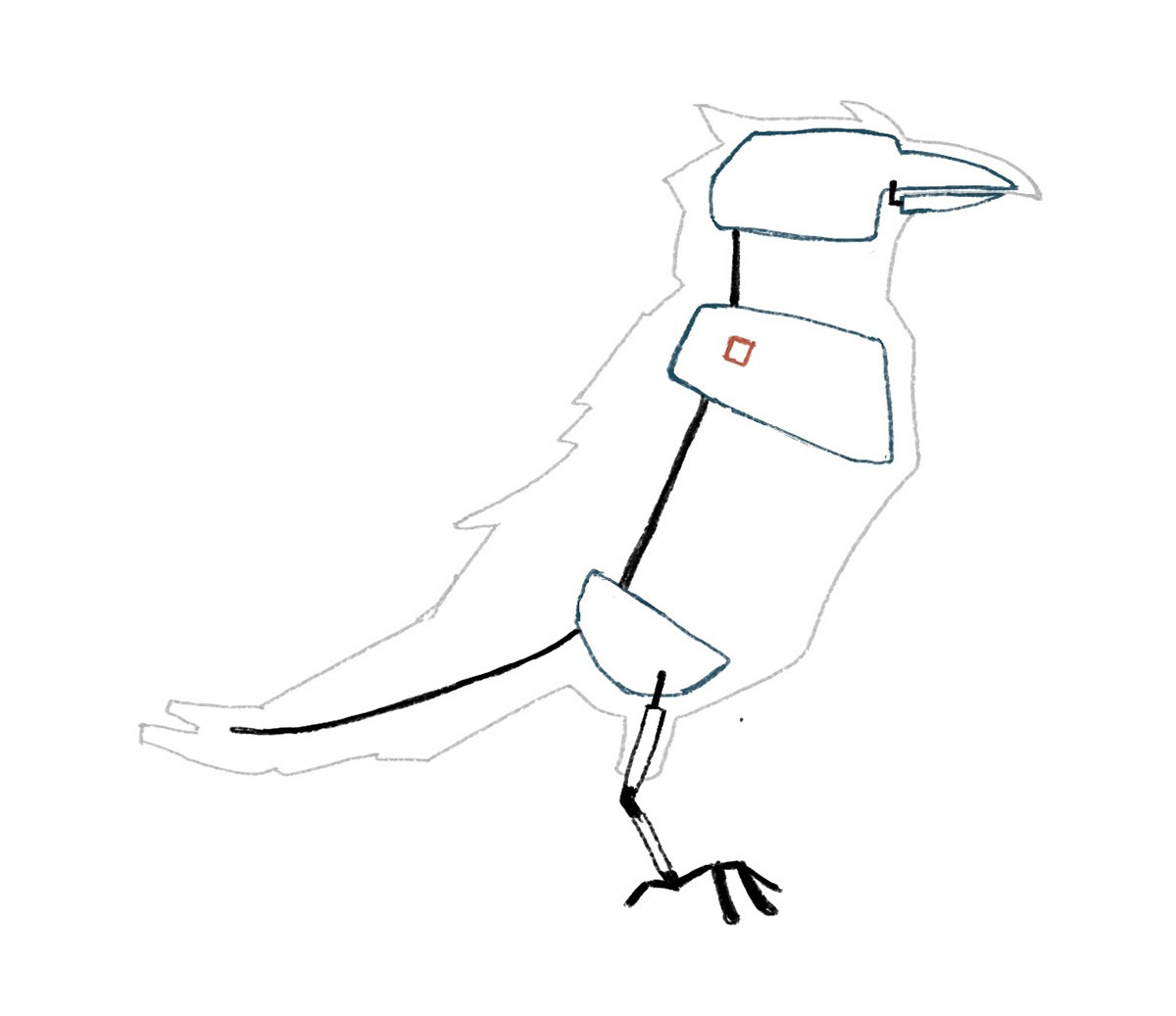Pilot Puppet
This was my first time making a wire puppet for stop motion animation, as well as my first time doing any sort of moldmaking and silicone casting.
Materials: Aluminum wire, wood, milliput epoxy putty, foam, square brass tubing, silicone, various fabrics/leather.
I started my process with character design and story, developing a female pilot character based off of women in wartime eras.
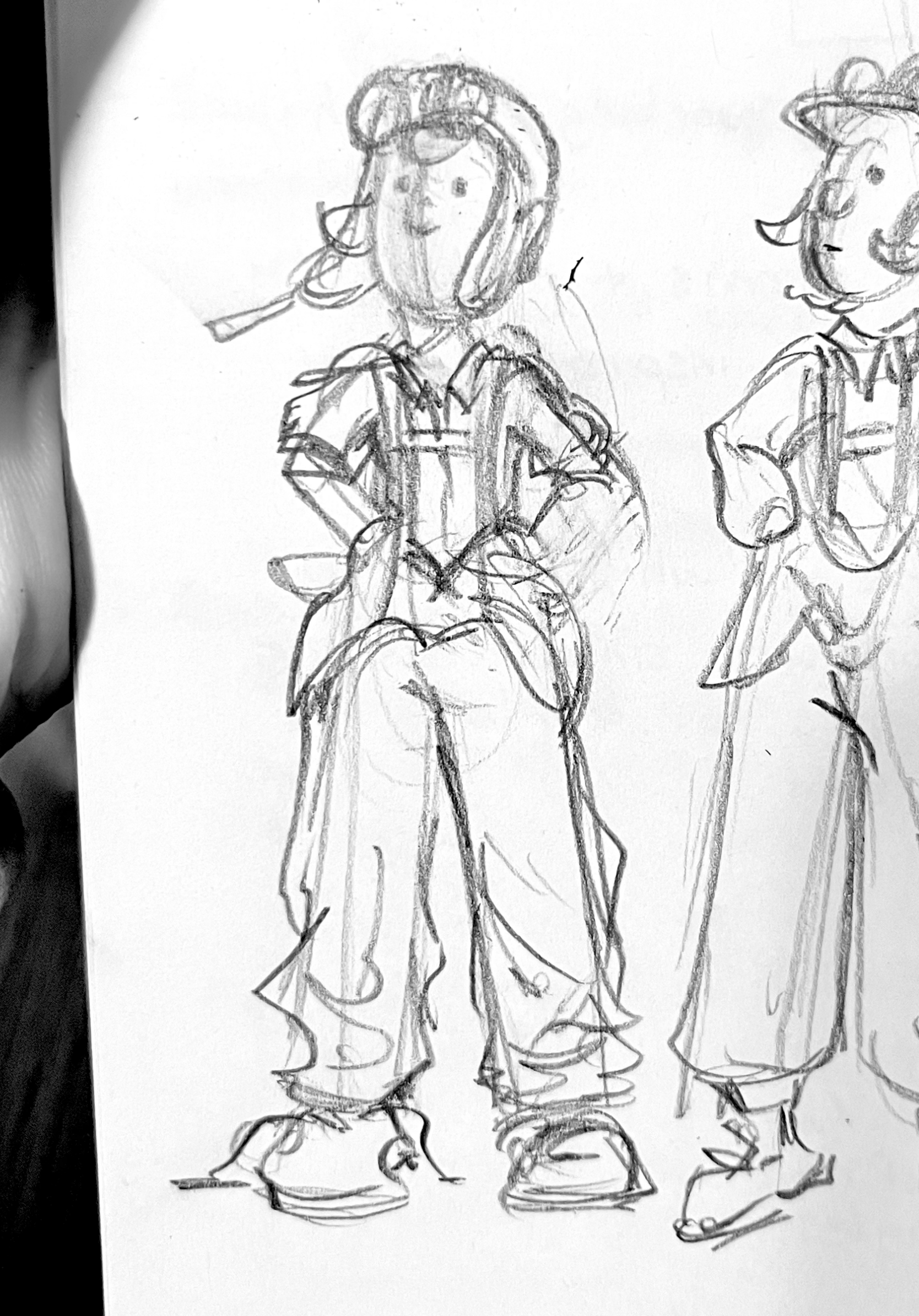
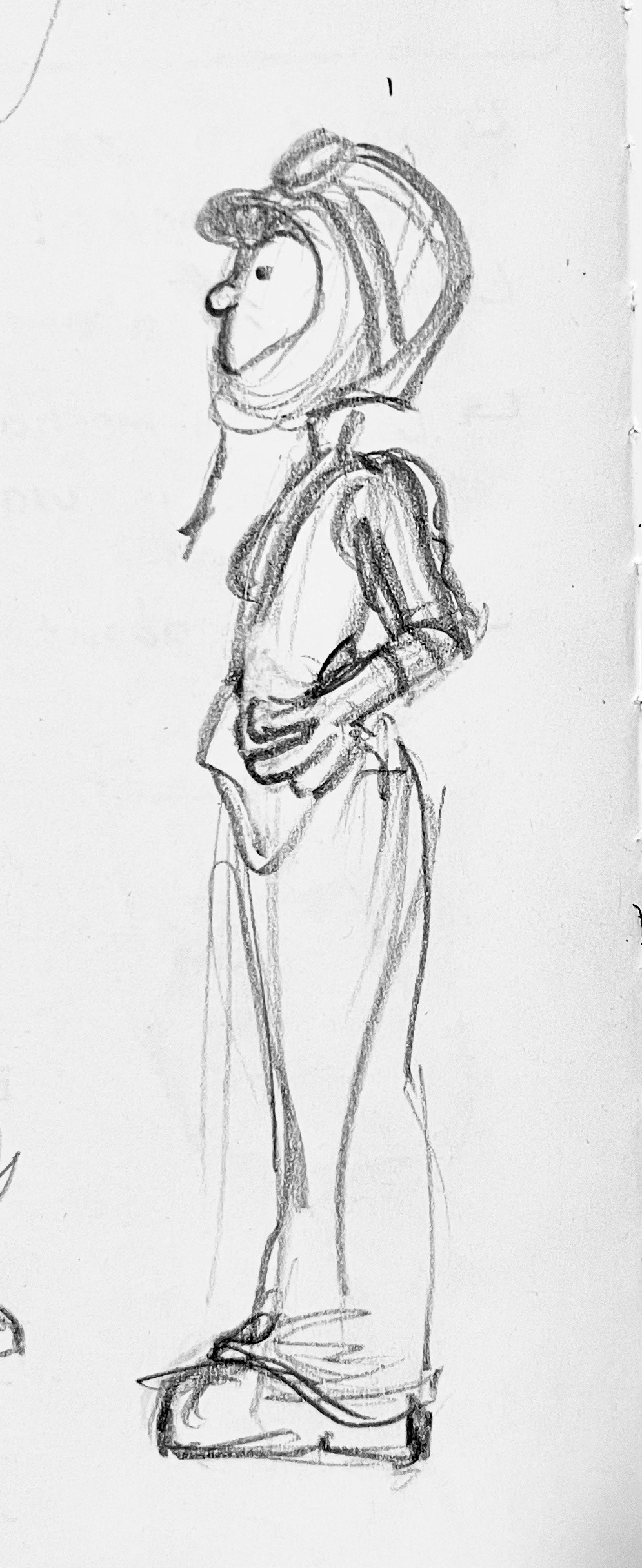
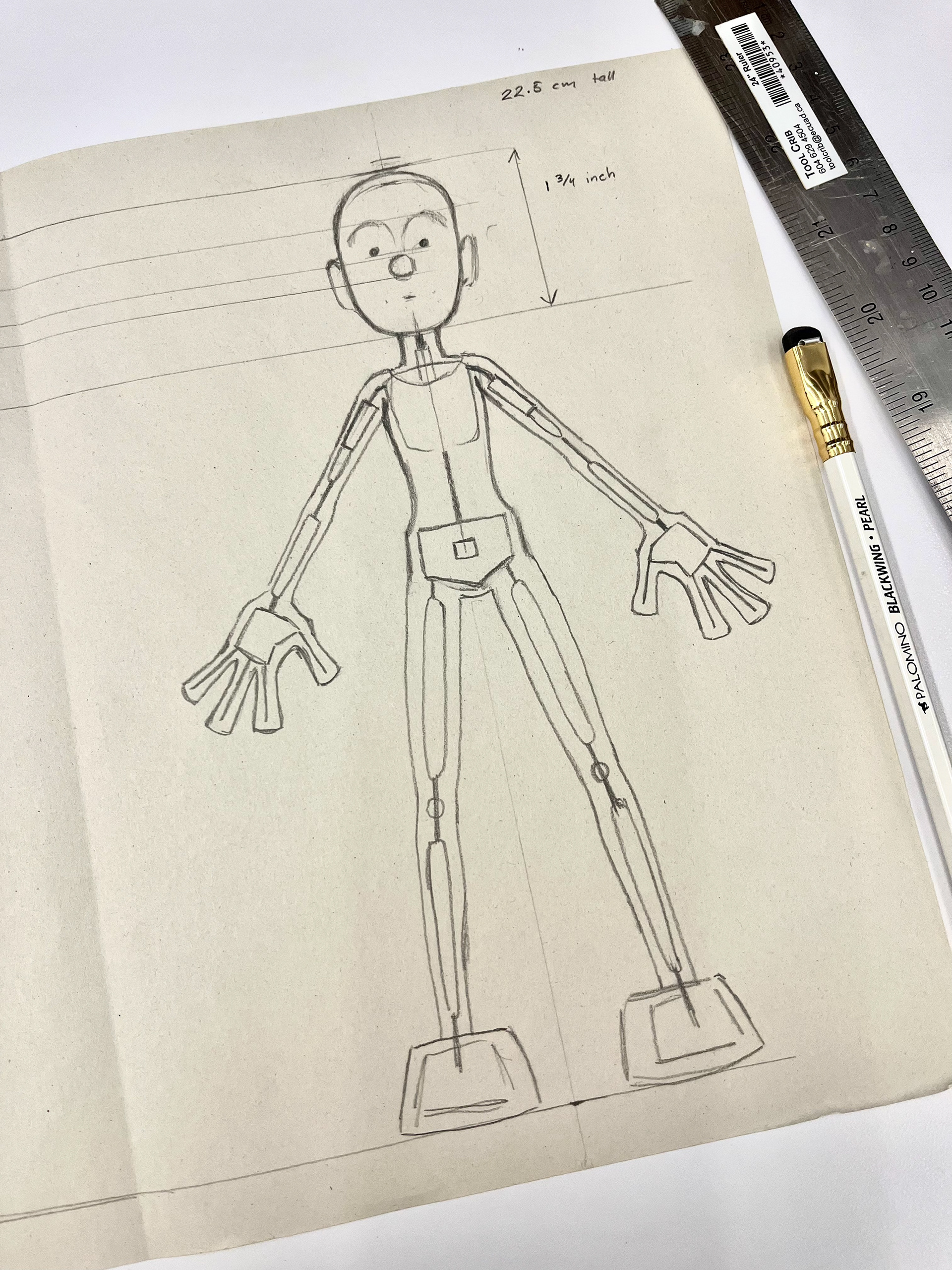
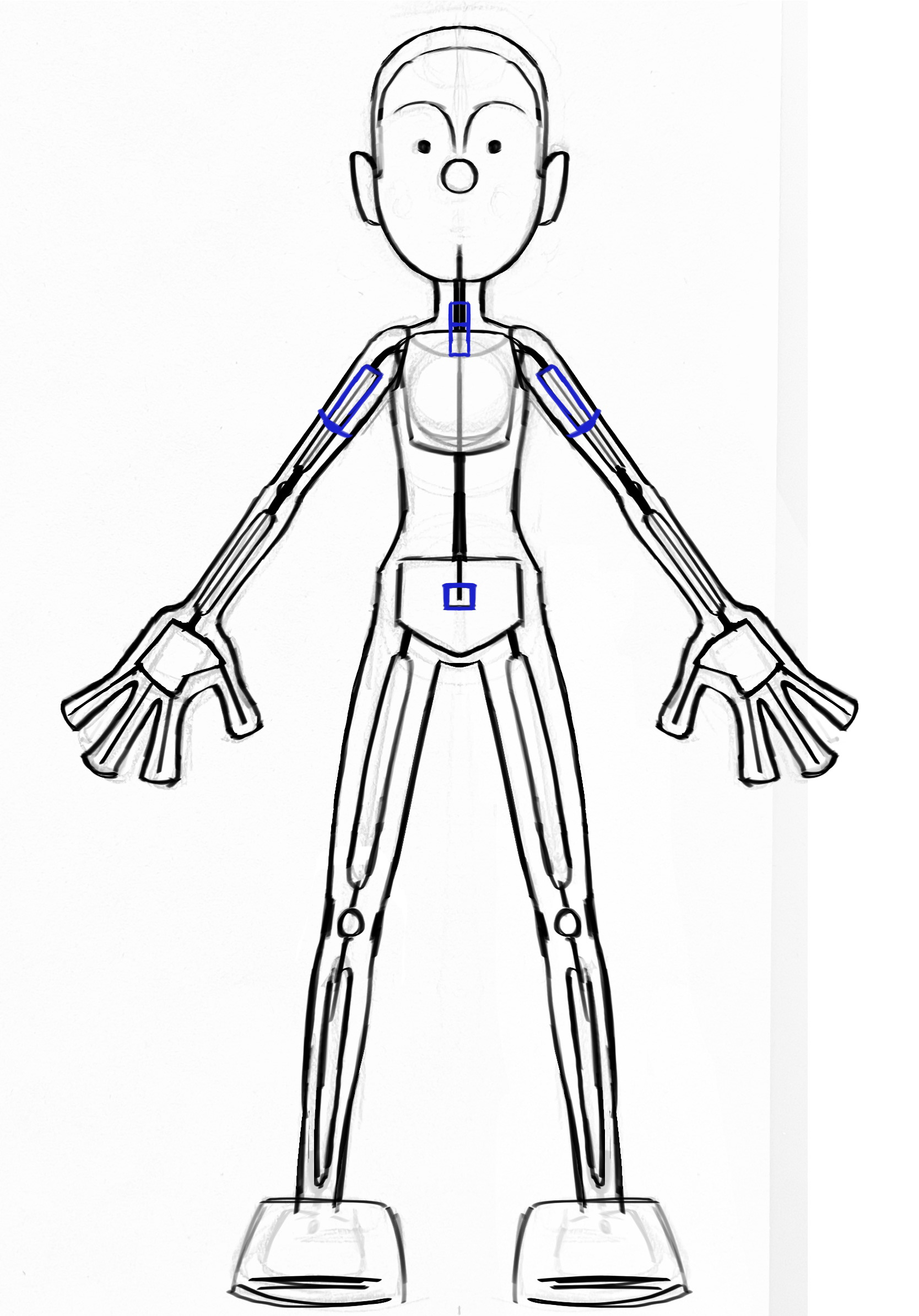
After solidifying the design, I drew up a scale drawing to break down the inner anatomy of the puppet. This allowed me to map out articulation points, "bones" and rigging points.
From there, I started my sculpt for moldmaking out of polymer clay. Knowing that I wanted to cast the head and hands in silicone, I knew that I needed to keep the design relatively simple for the sake of making a 2-part mold.
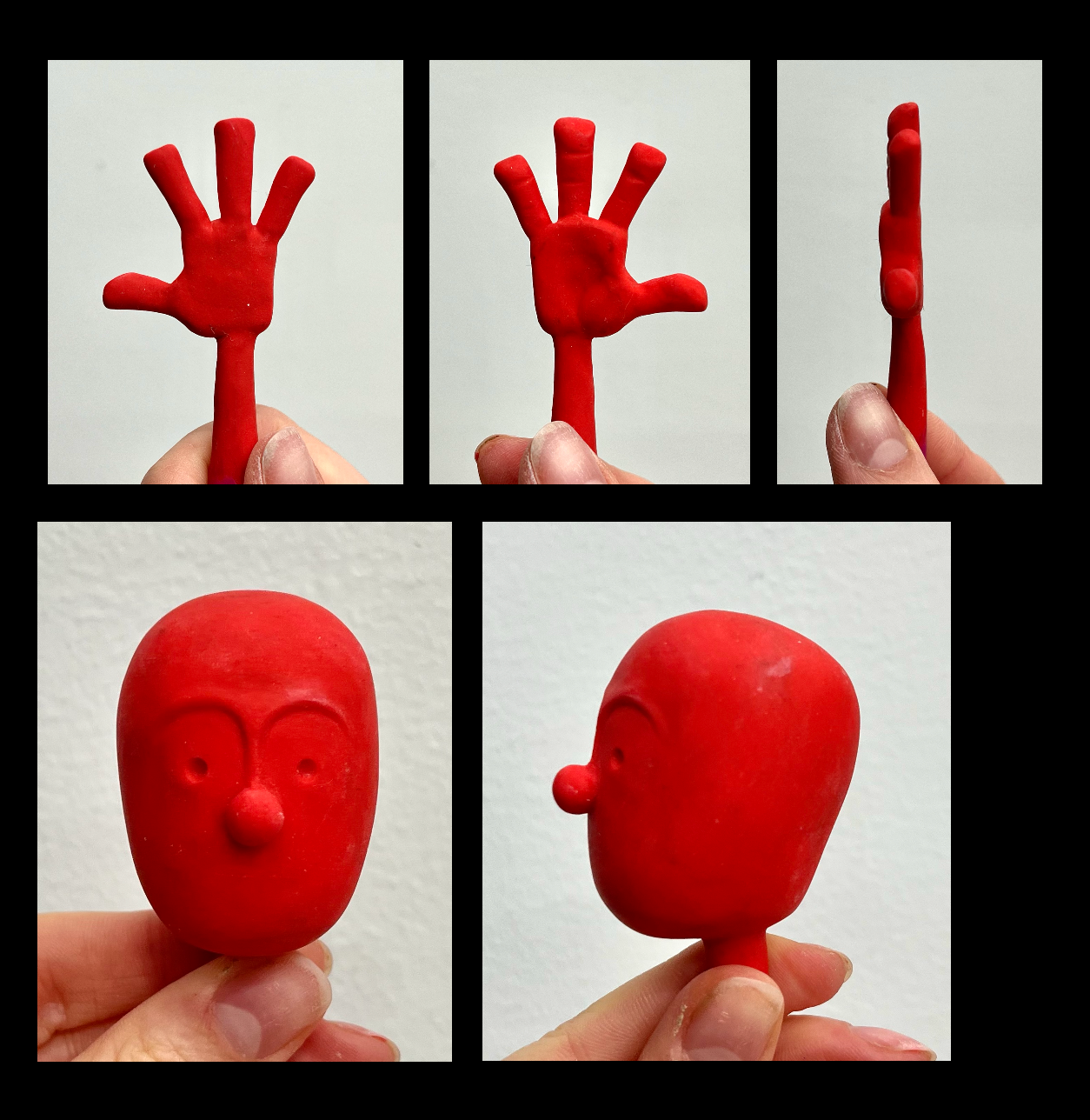
Armature Building: Aluminum Wire and Wood
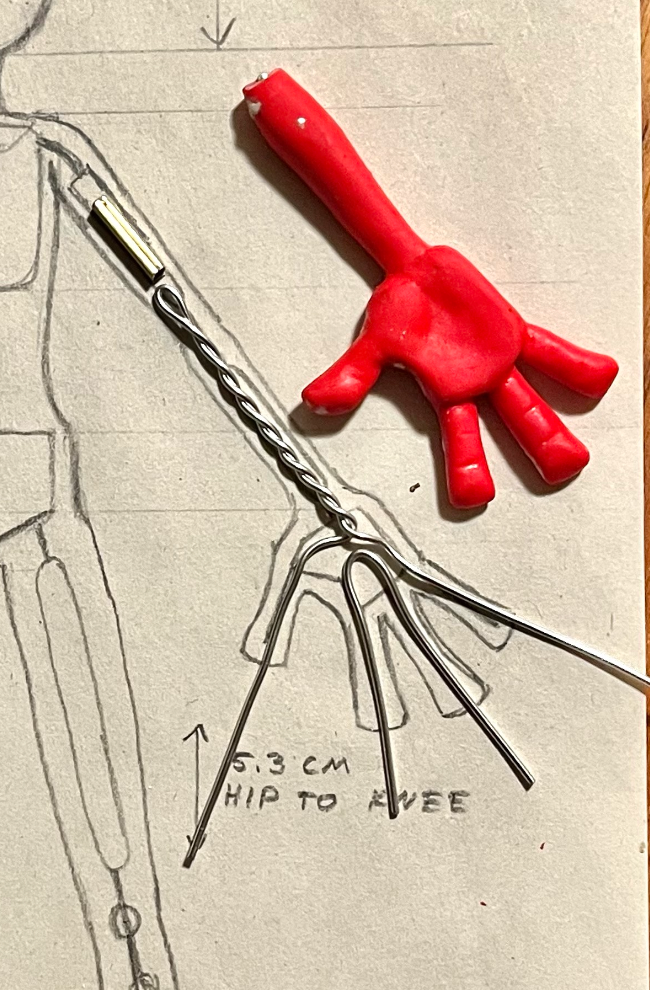
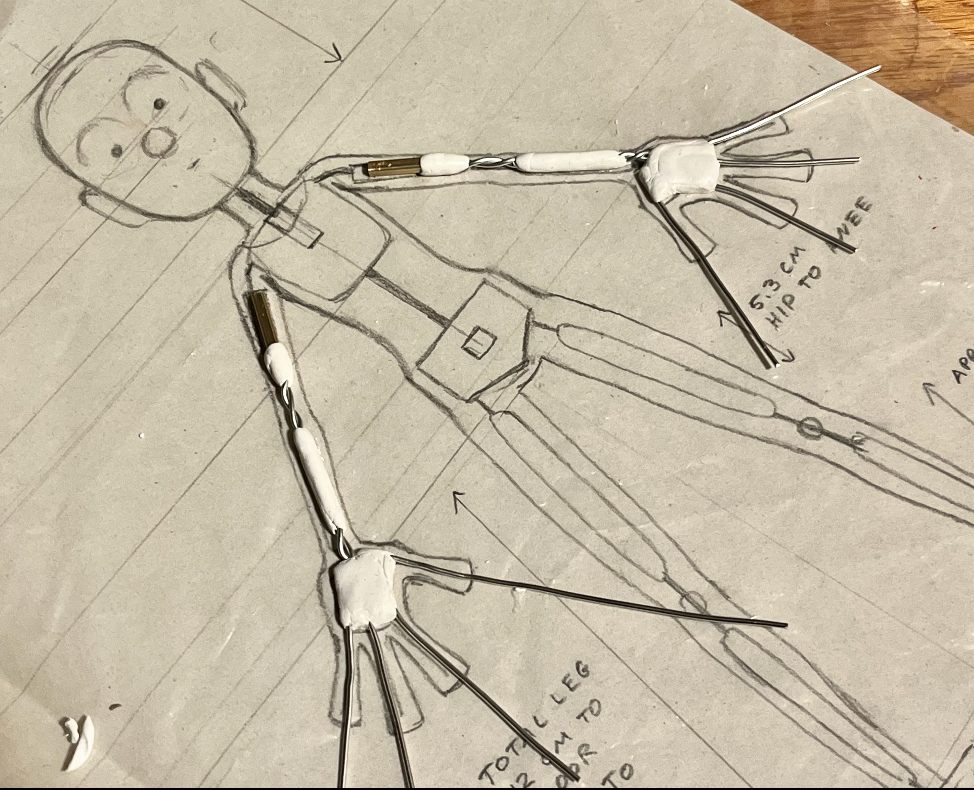
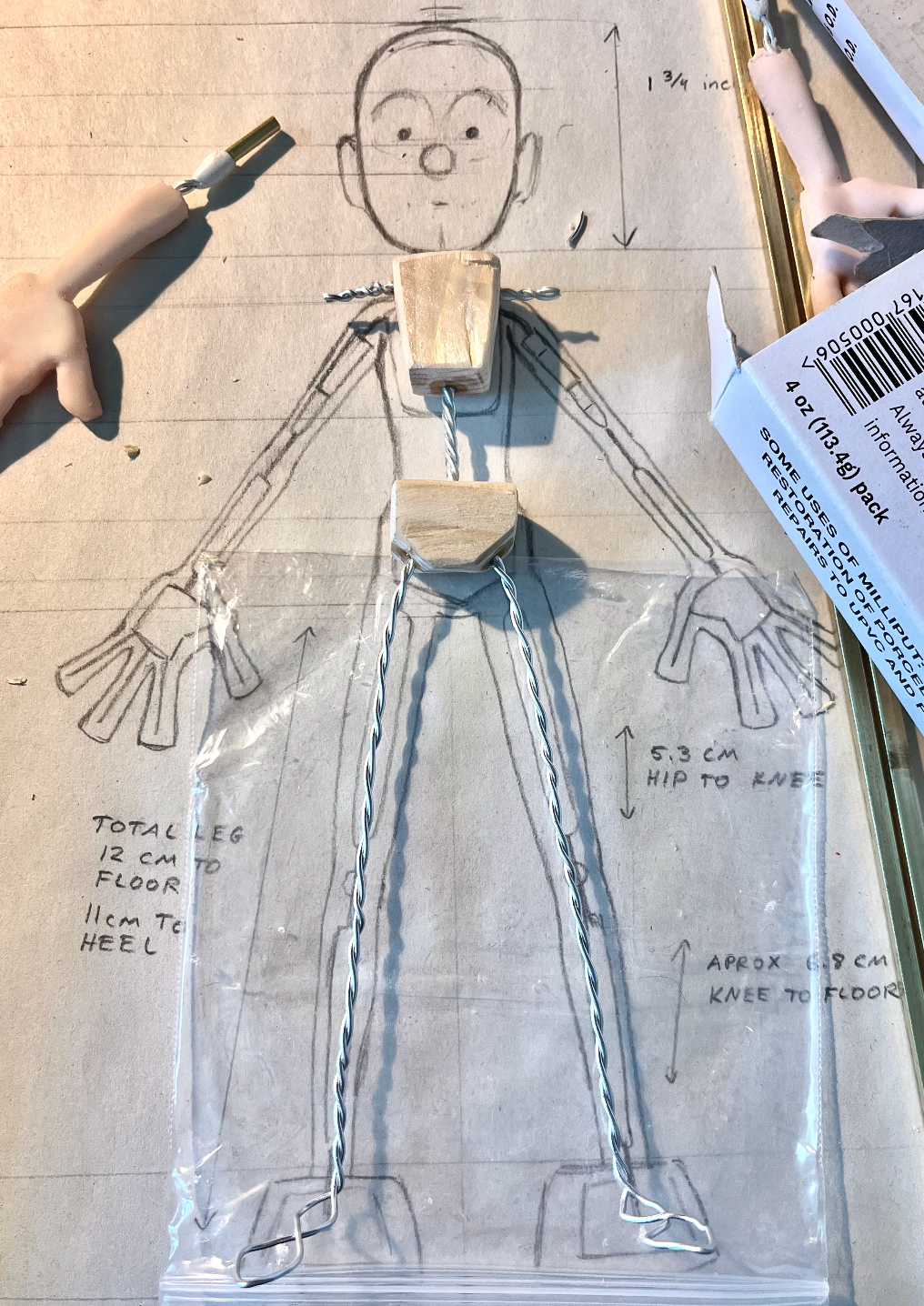
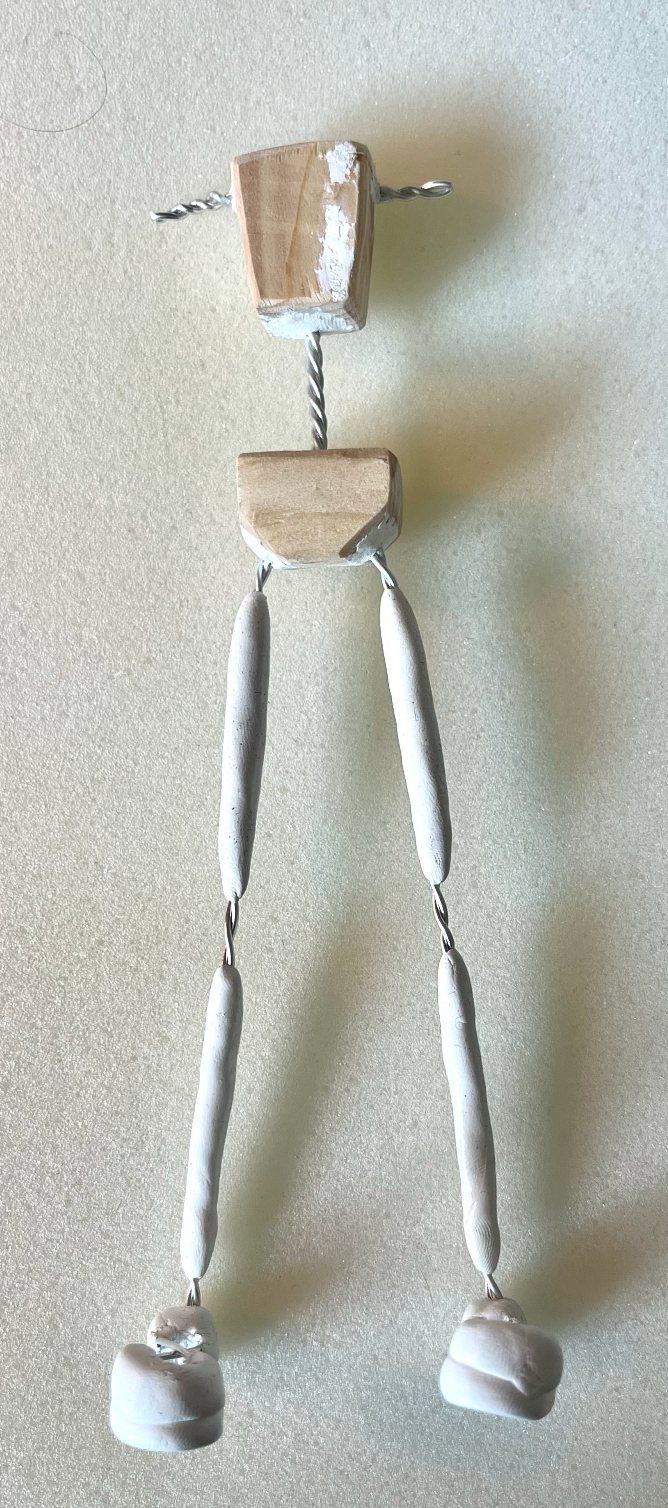
Silicone Casting: Squish Mold with Brush on Layer
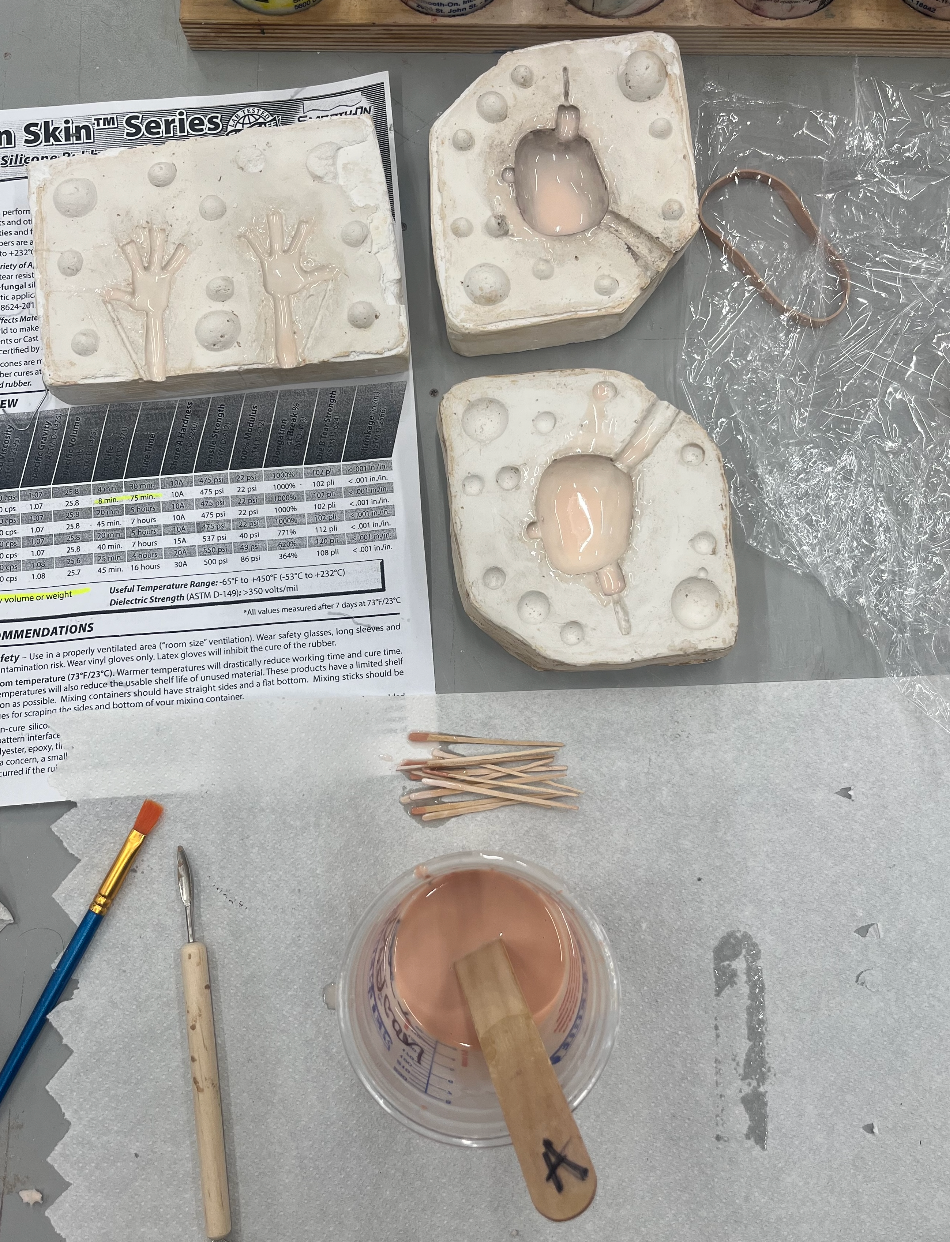
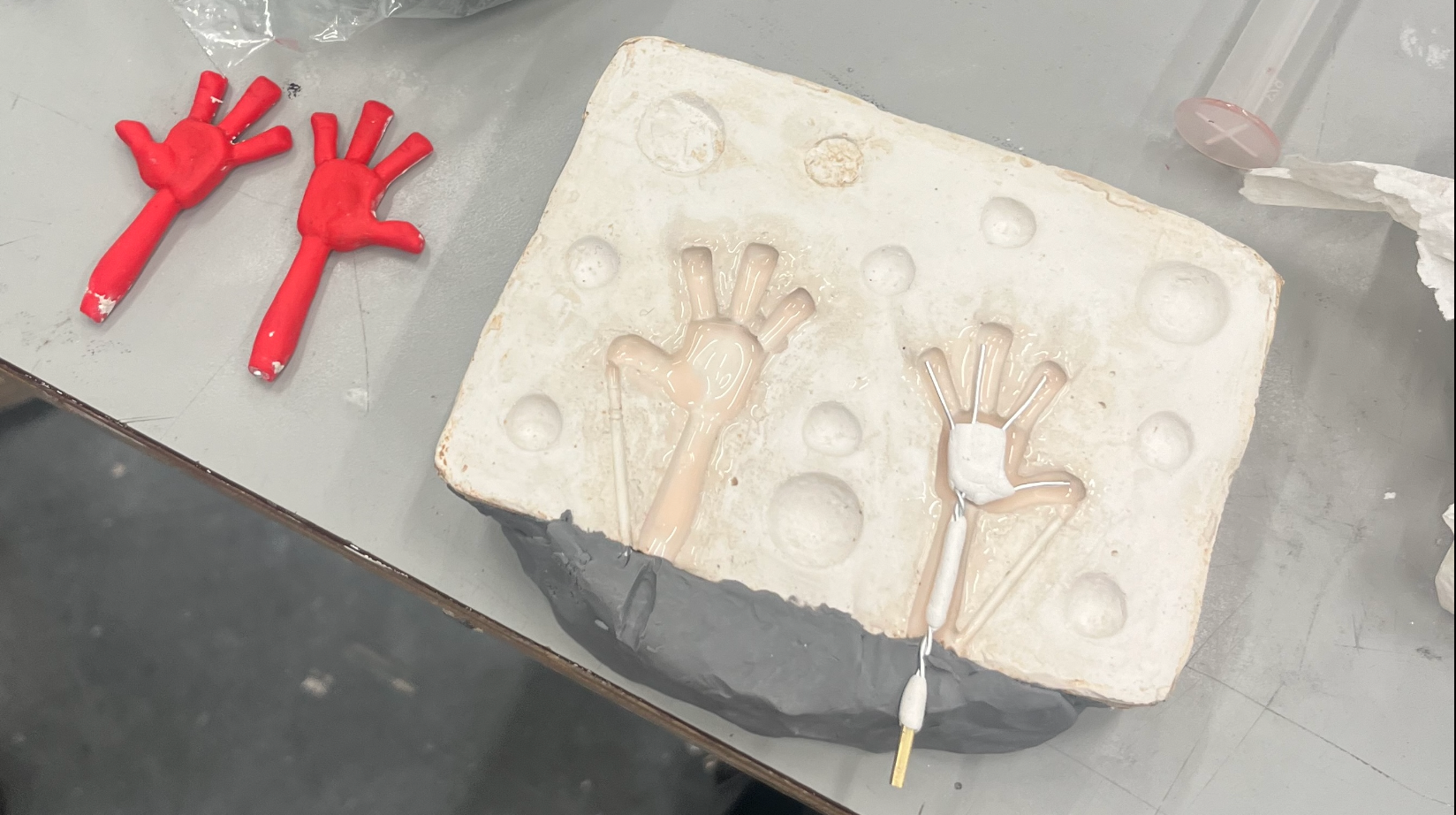
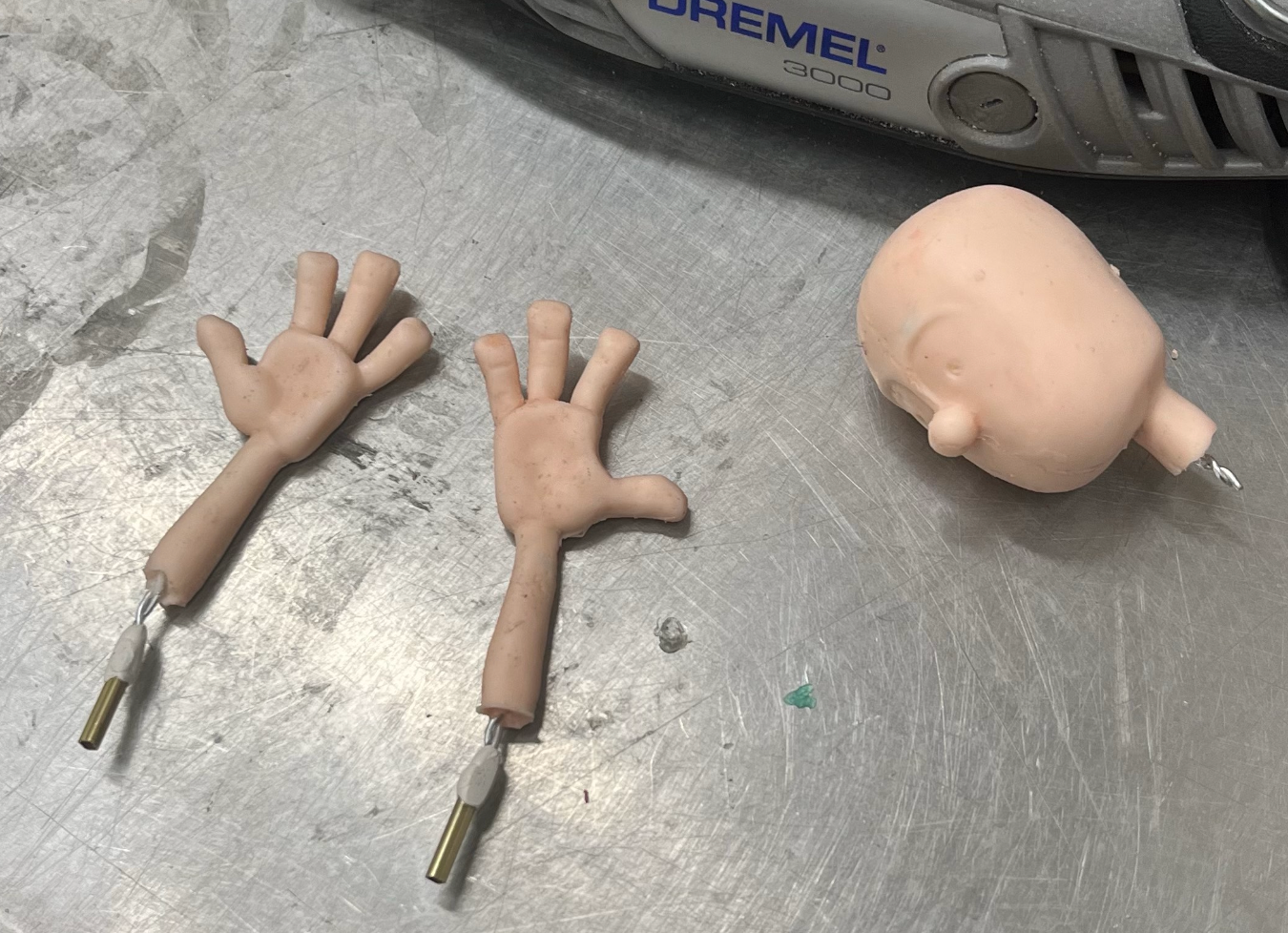
Bat Puppet
This stop motion puppet is made out of aluminum wire, wood, milliput epoxy putty, square brass tubing, foam, felted wool, and silicone.
I made this puppet with the intention of practicing a flap cycle. I was inspired by the translucency of bat wings, which would work well casted in silicone to stretch into a full range of motion.
I first began with a rough character sketch and then created a scale drawing of the puppet to start building my armature and clay sculpts.
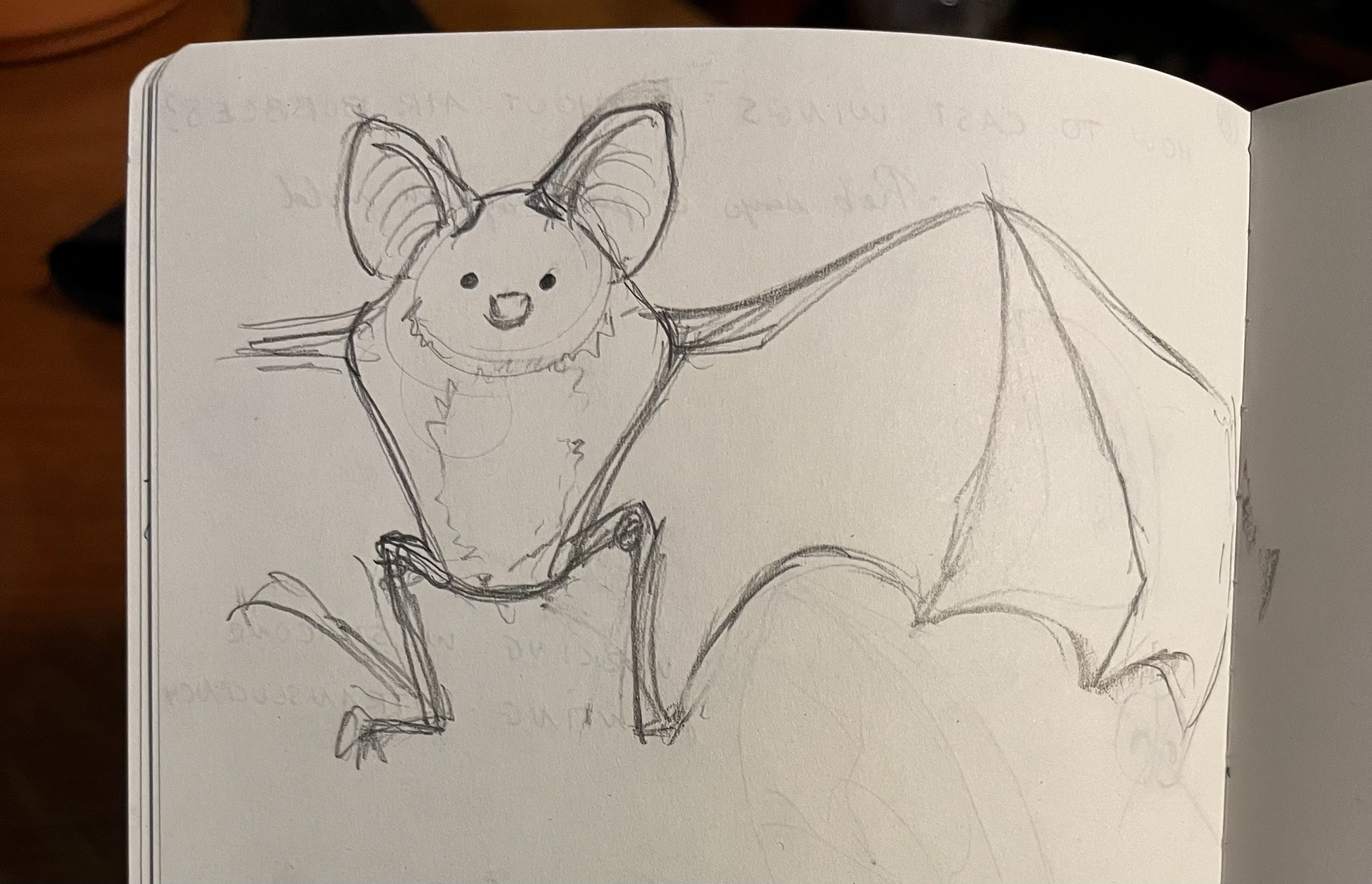

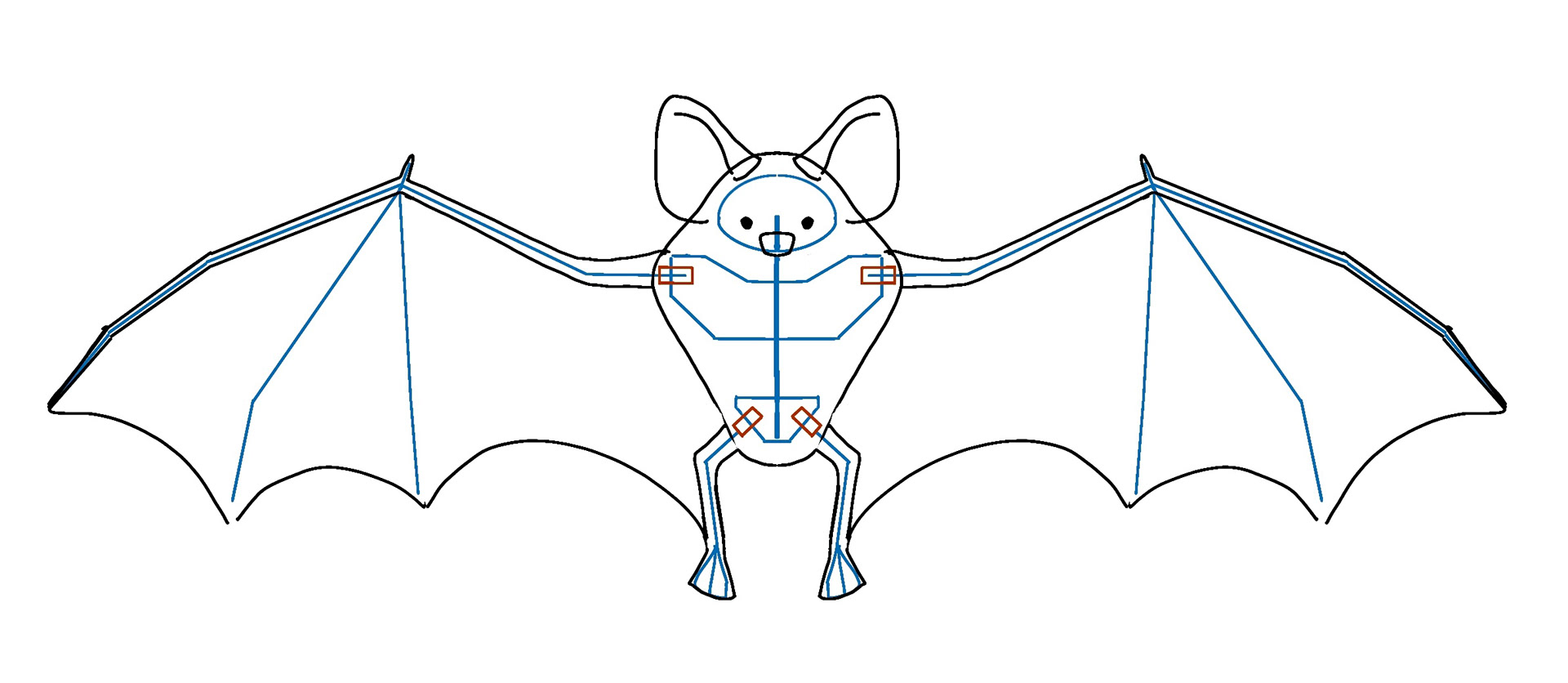
Since the wings and ears were symmetrical, I only needed to make one 2-part mold for each. This meant that I had to find a way to securely attach the wings to the body of the puppet, which I worked into the design by using square brass tubing as attachment points (red lines in diagram above). I wanted to make sure that the body was articulated and not just the wings, so that the flap cycle animation could be more believable.

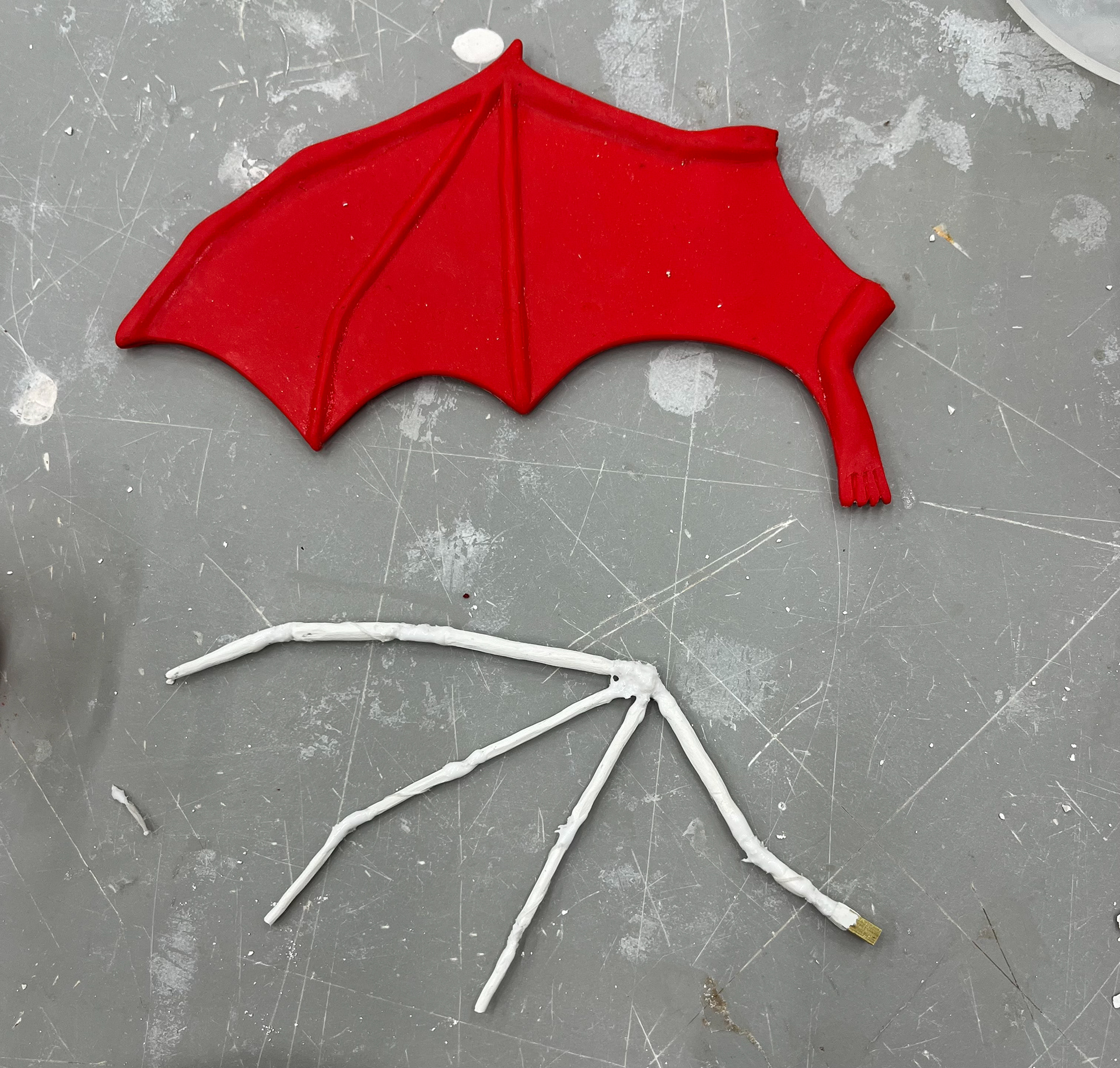
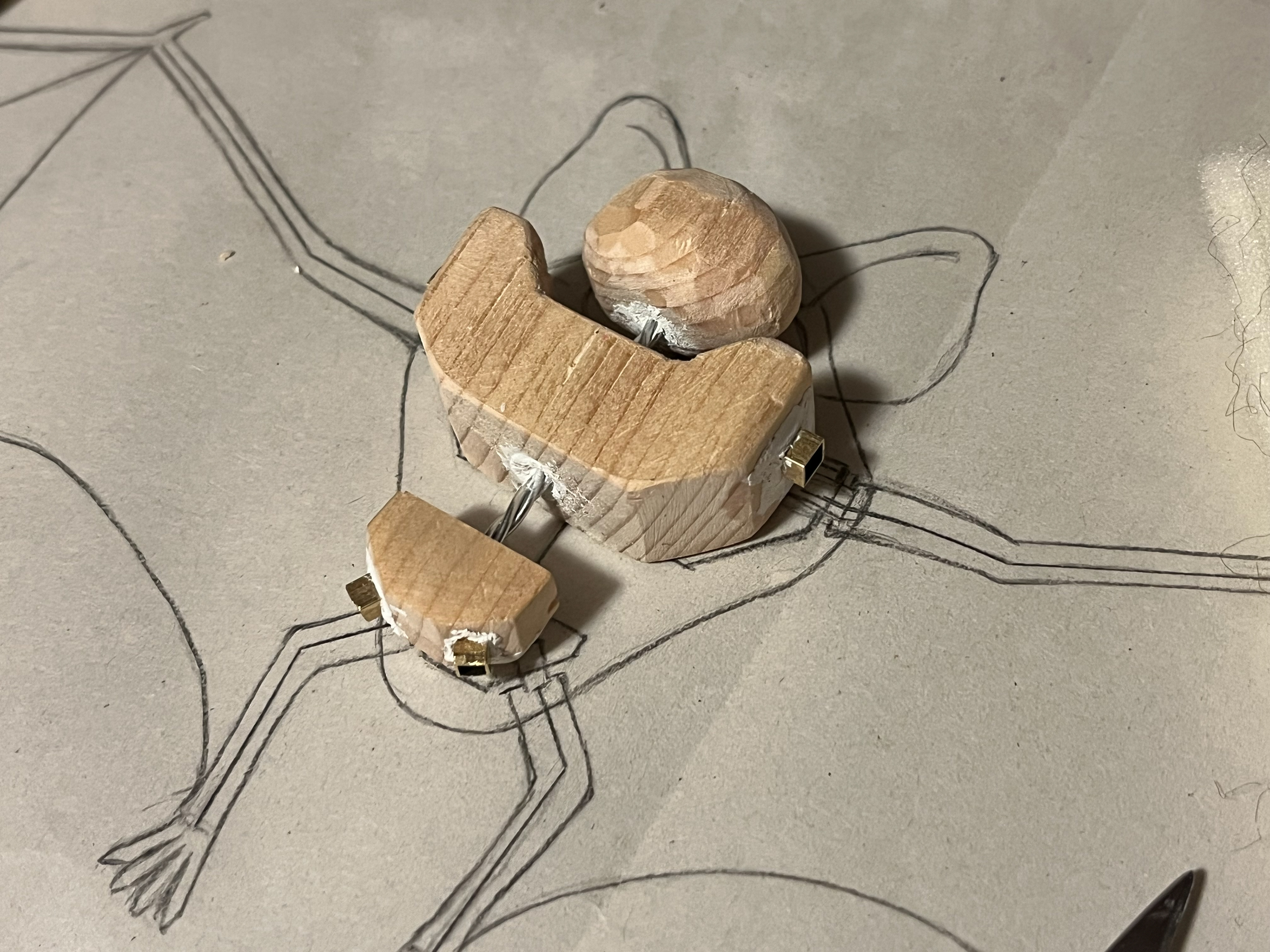
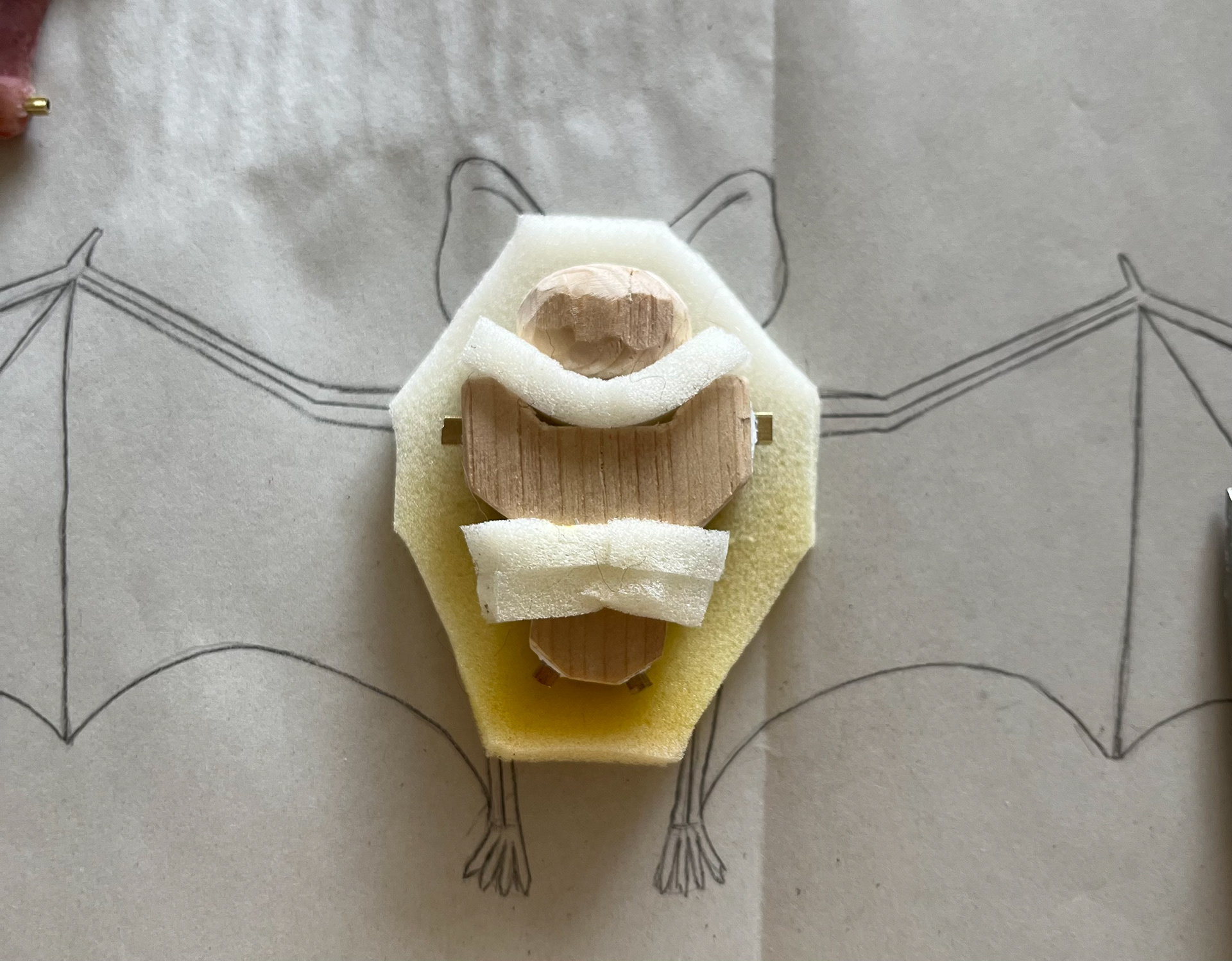
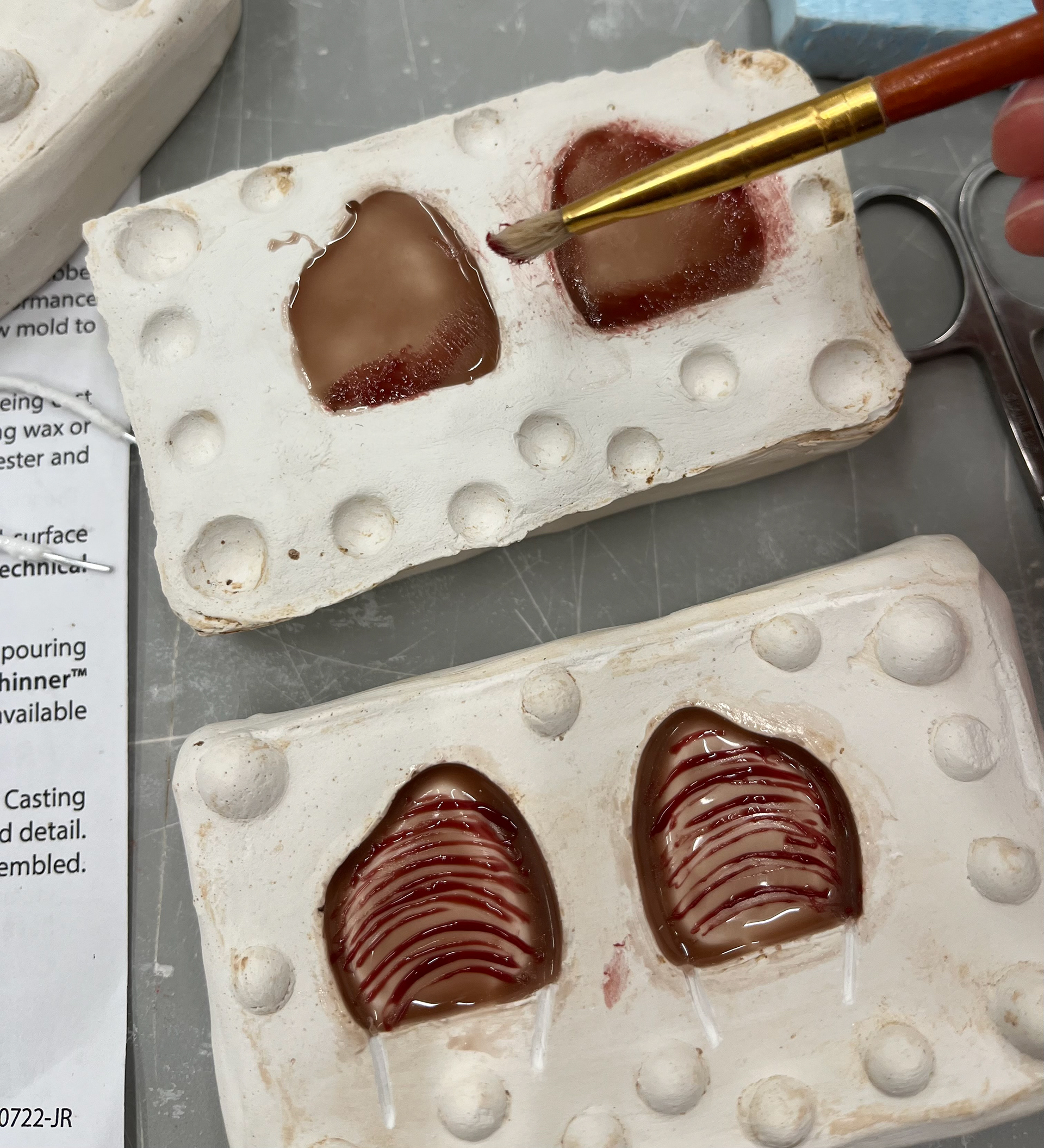
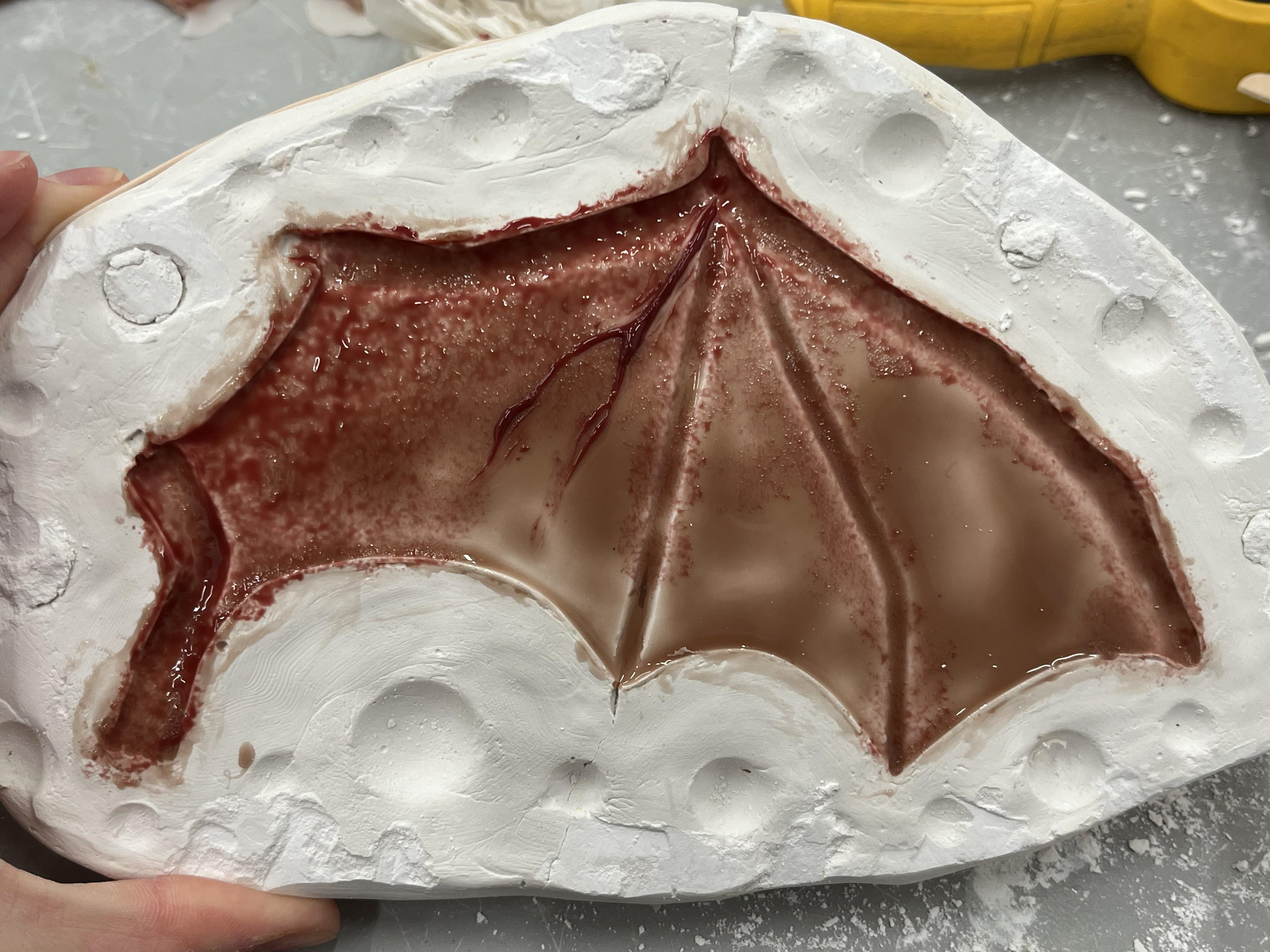
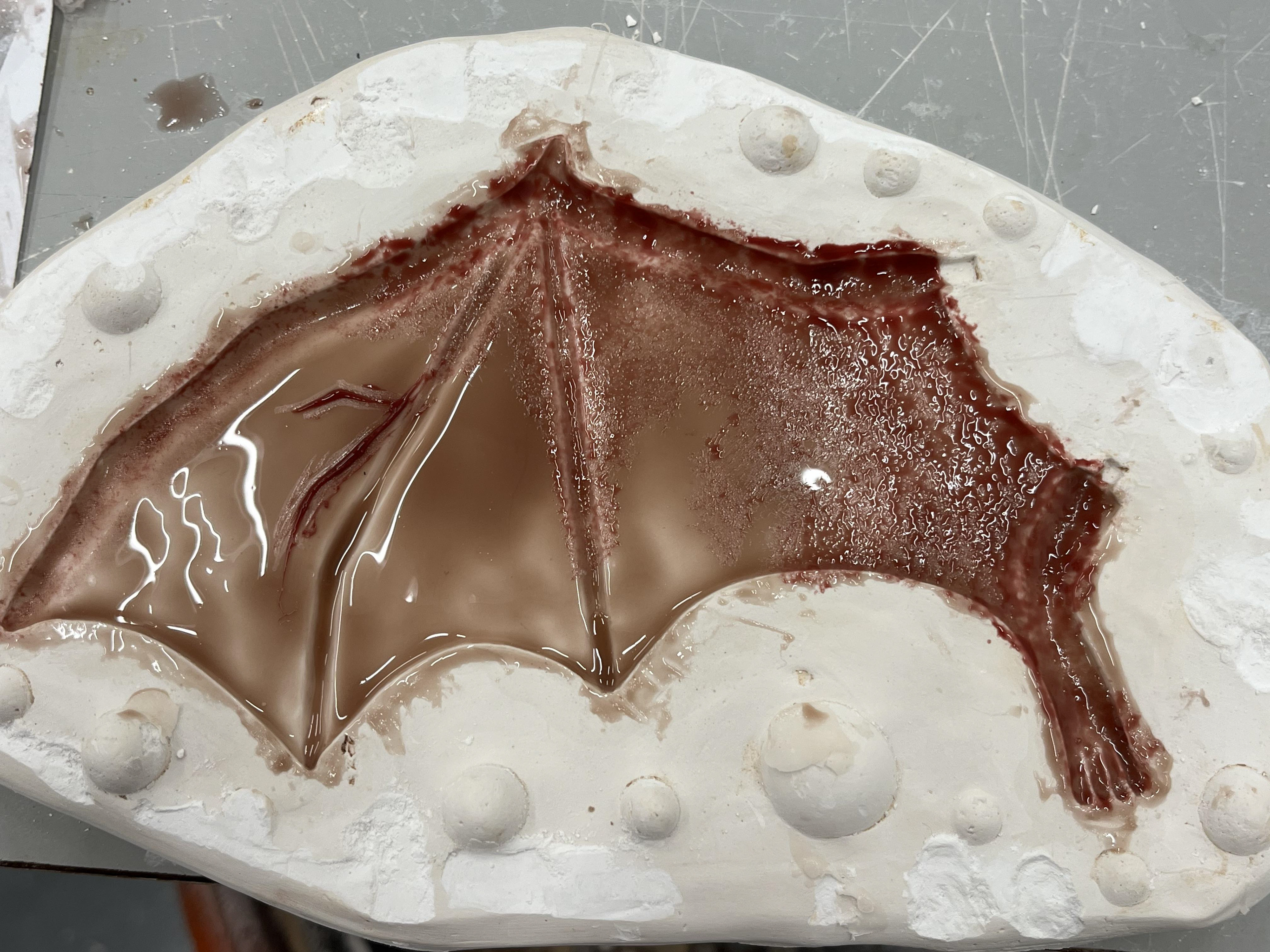
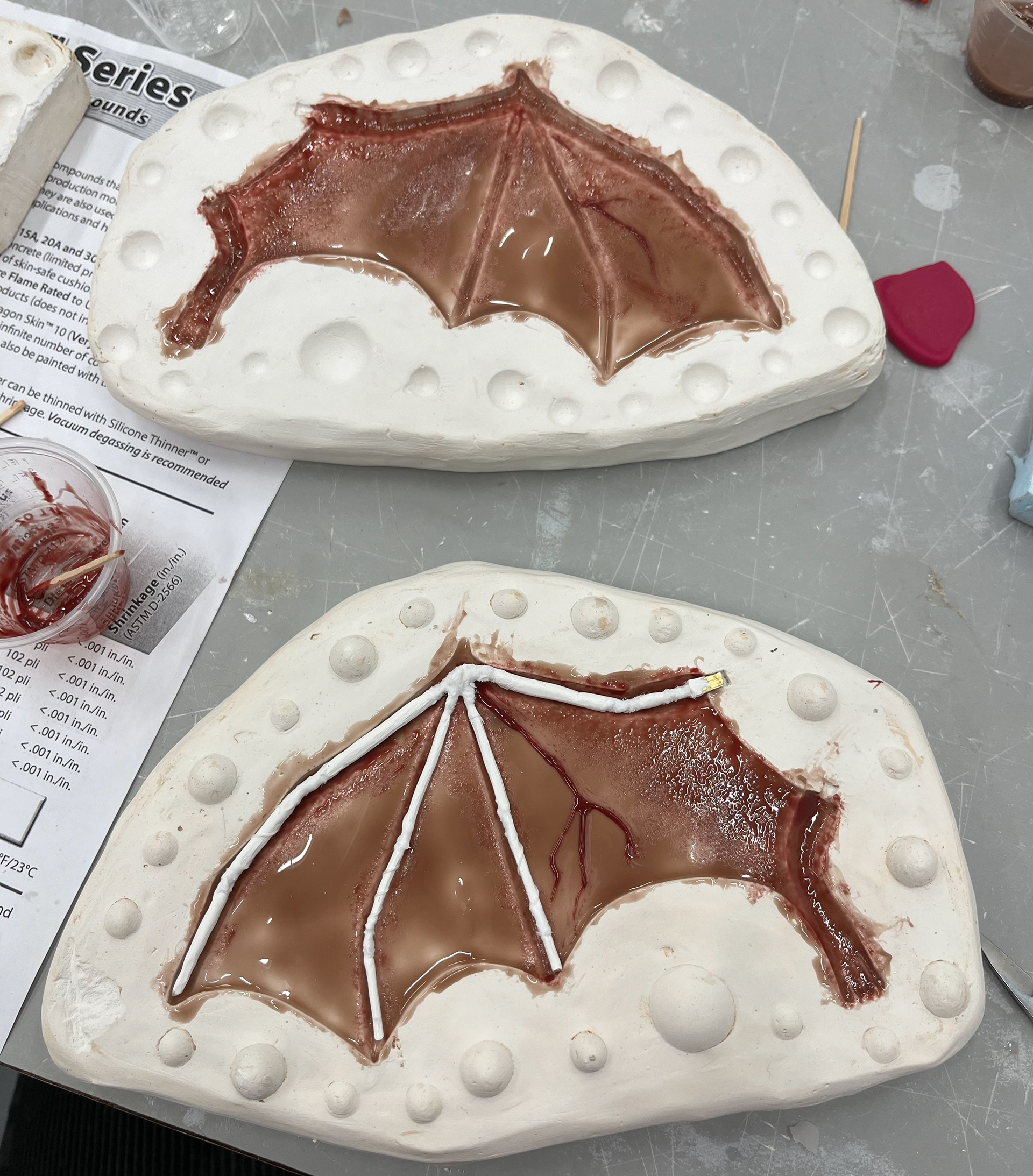
The photos above illustrate the steps in the fabrication process, from the armature and foaming of the puppet, to the sculpts for the silicone elements. This time around I tried painting with silicone for the first time in order to show detail and transparency in the brush-on layer.
Then I began sewing the silicone ears directly to the puppet body, and added layers of needle felted wool to create the fuzzy body of the bat.
I made sure to keep the square brass tubing accessible to attach and remove the wings if necessary. There were also rigging points on the side and back of the puppet to allow for both a side and front profile animation of the bat.
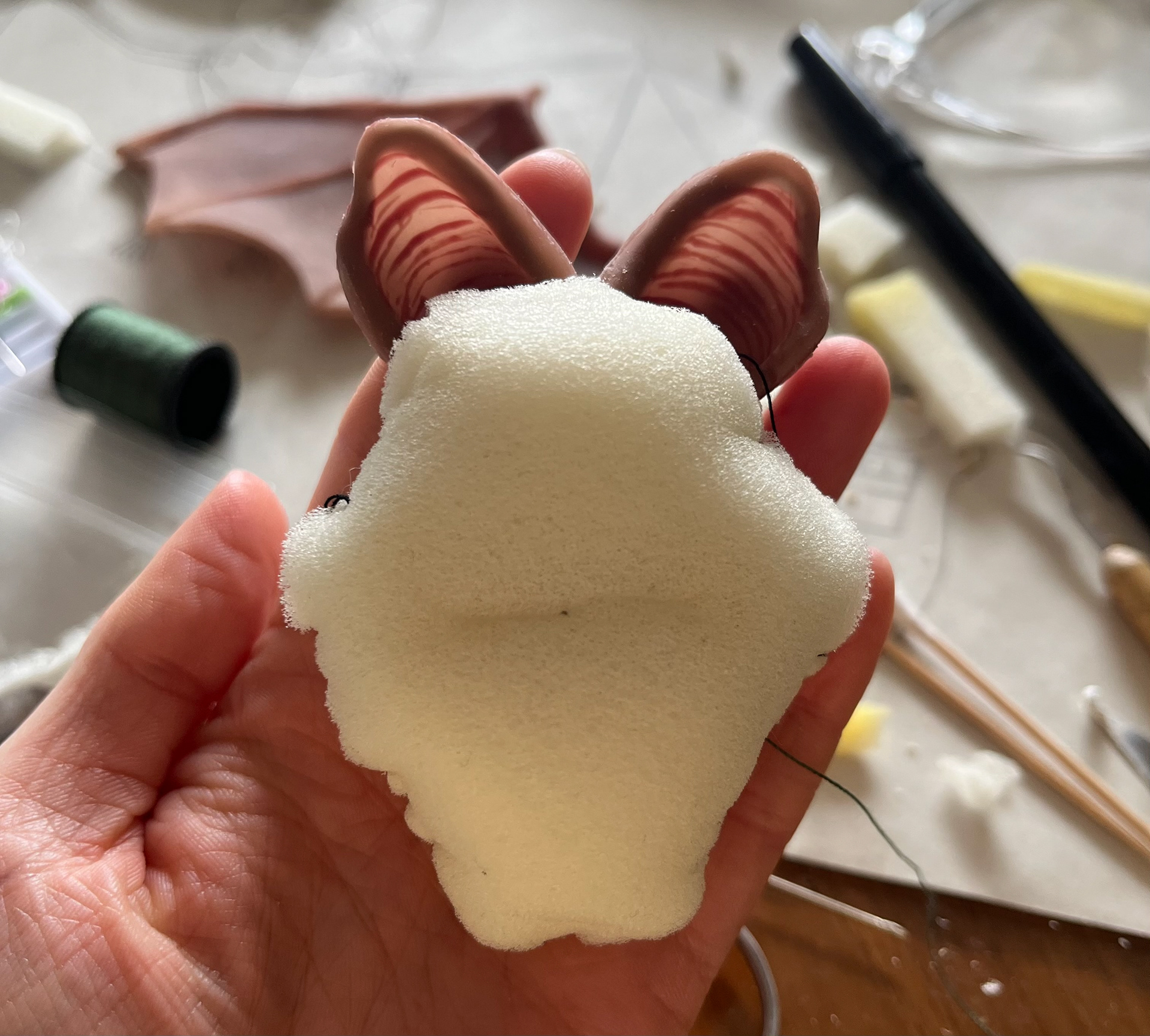
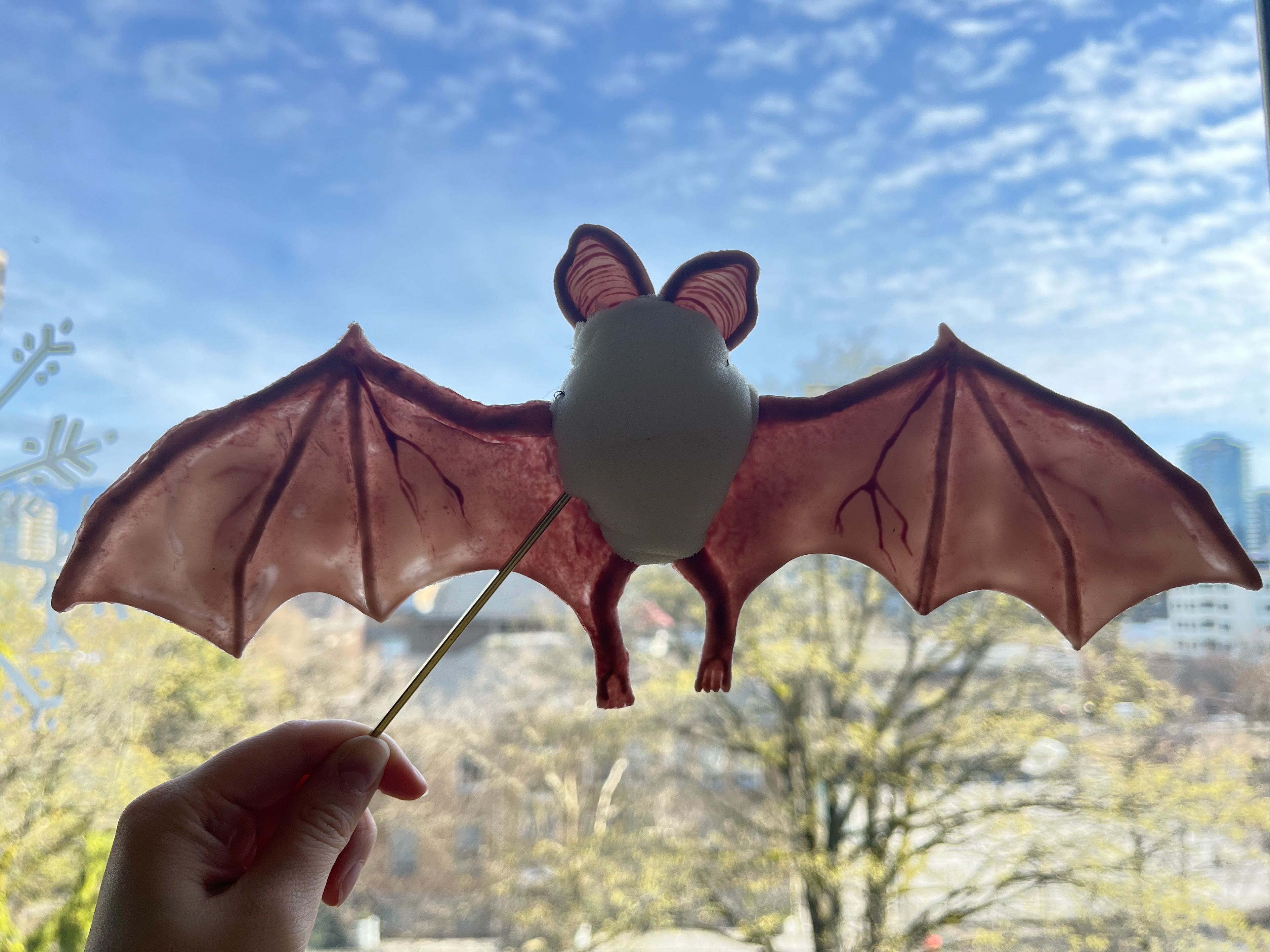
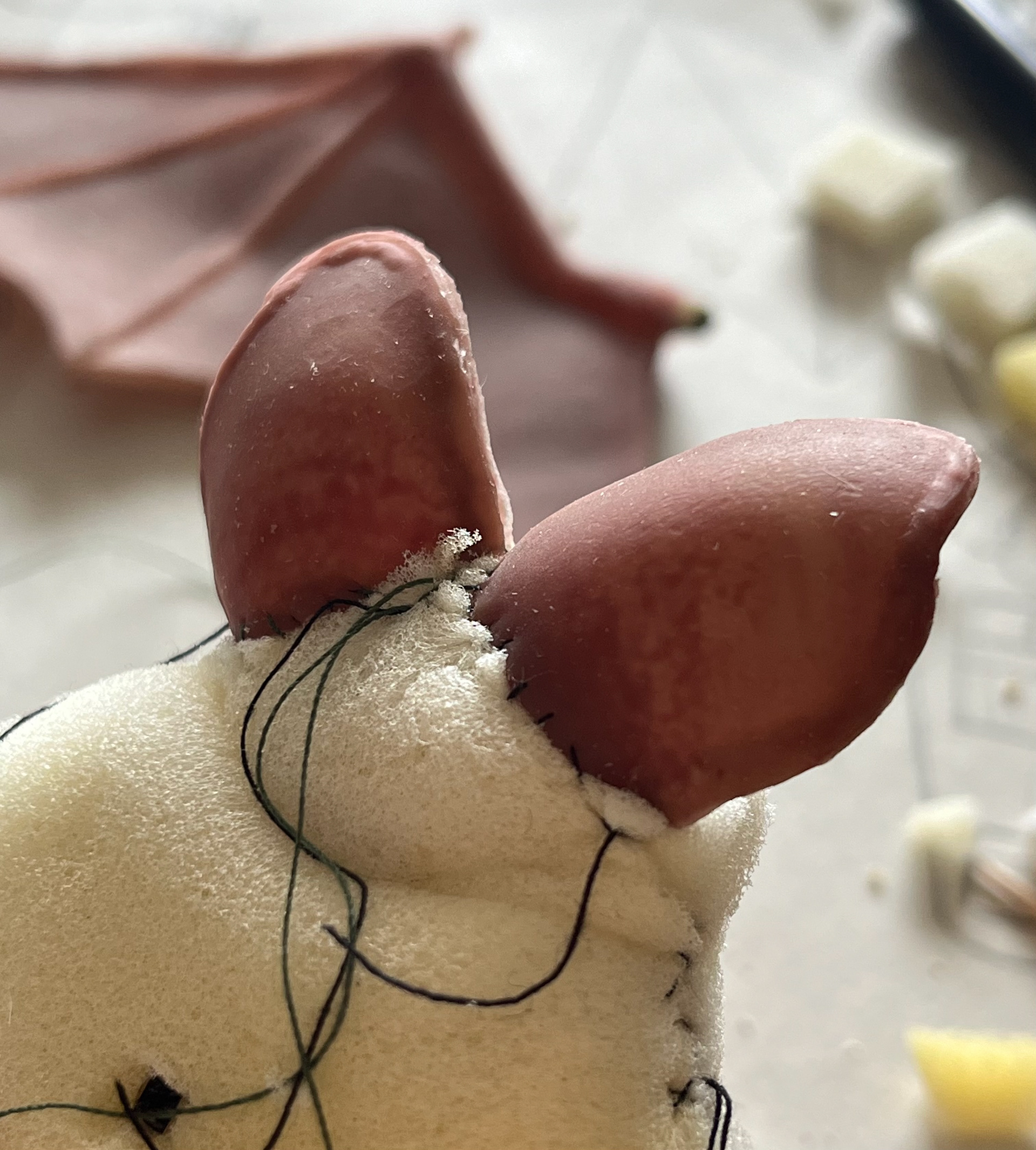
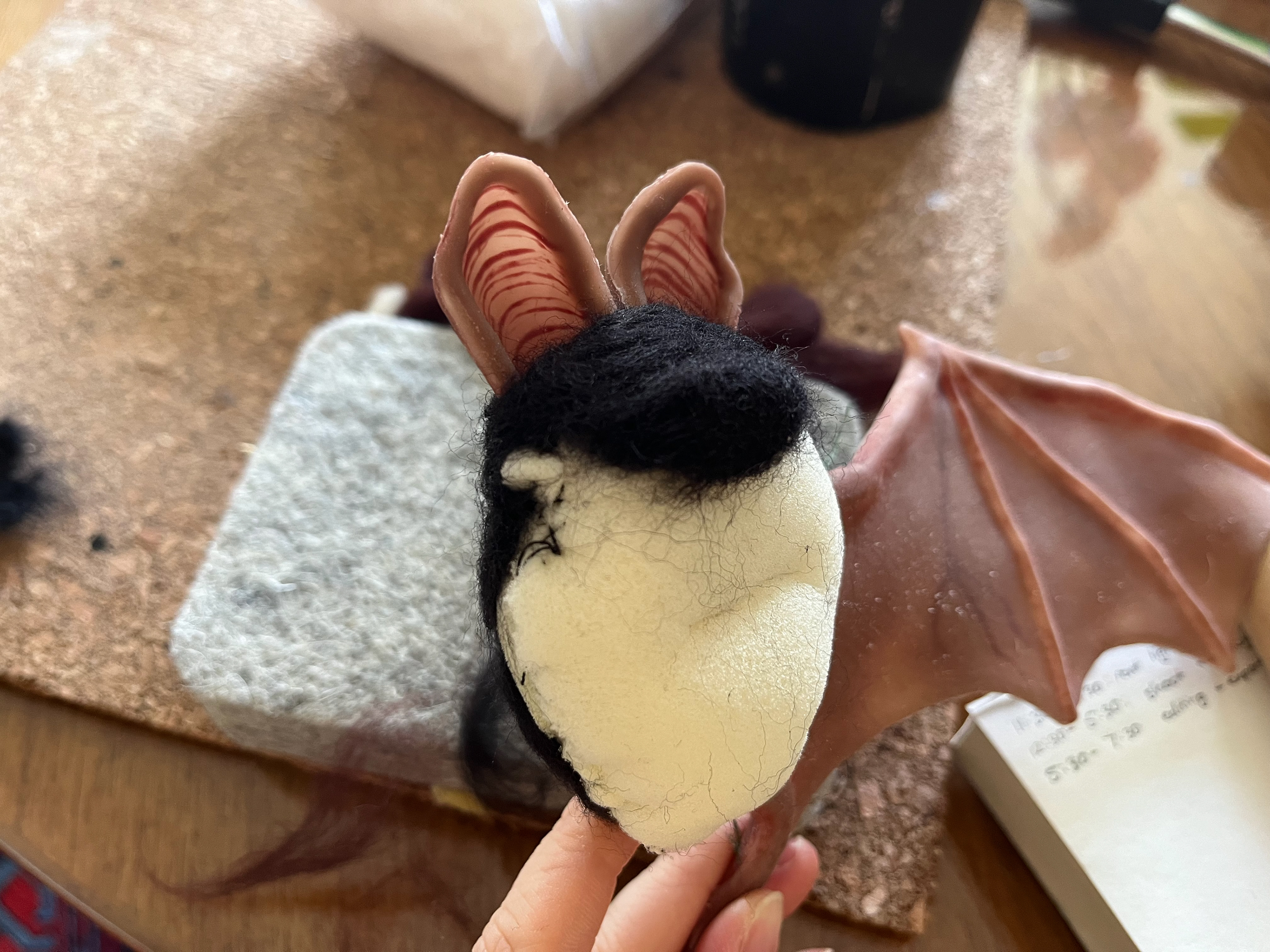
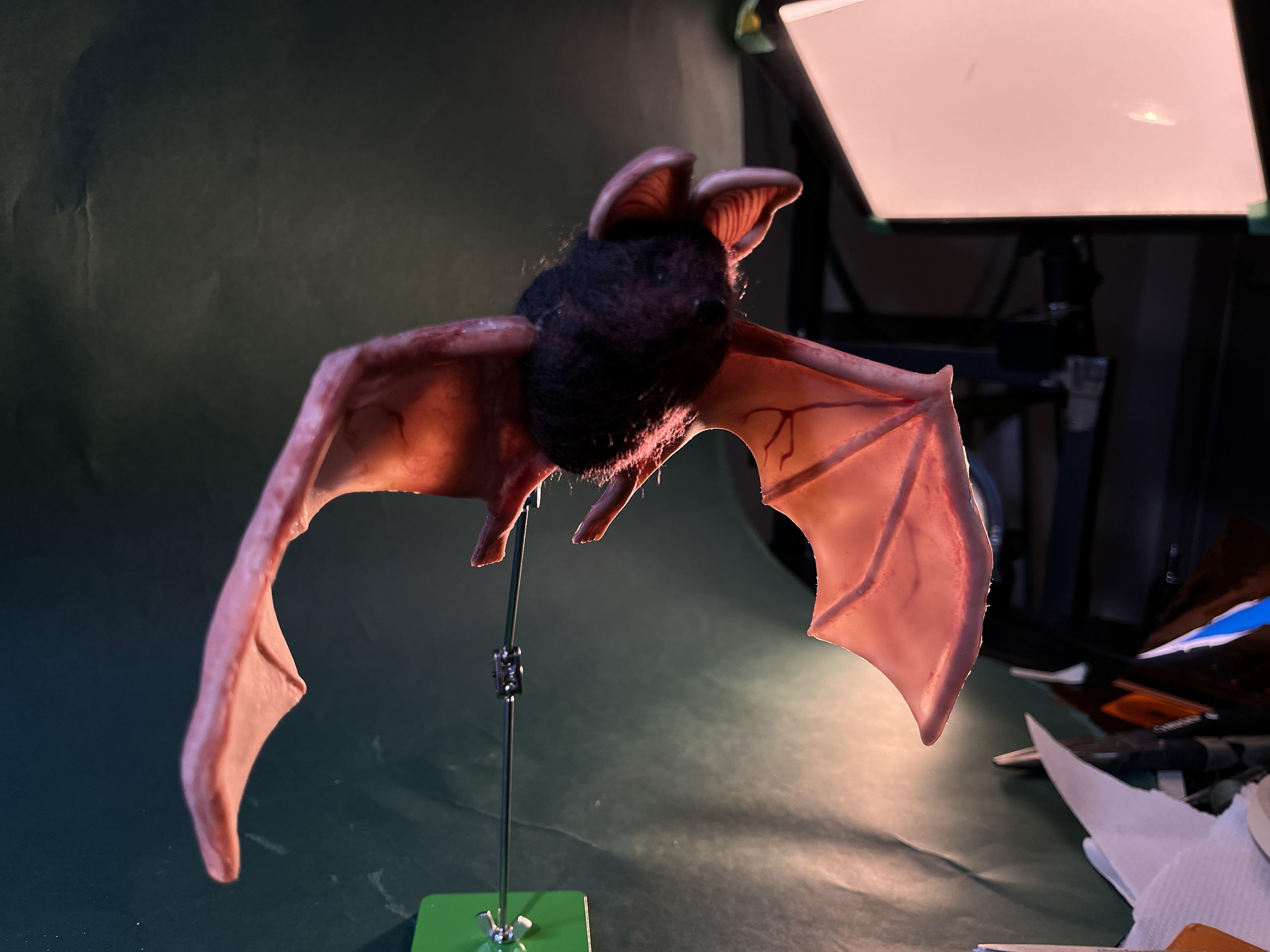
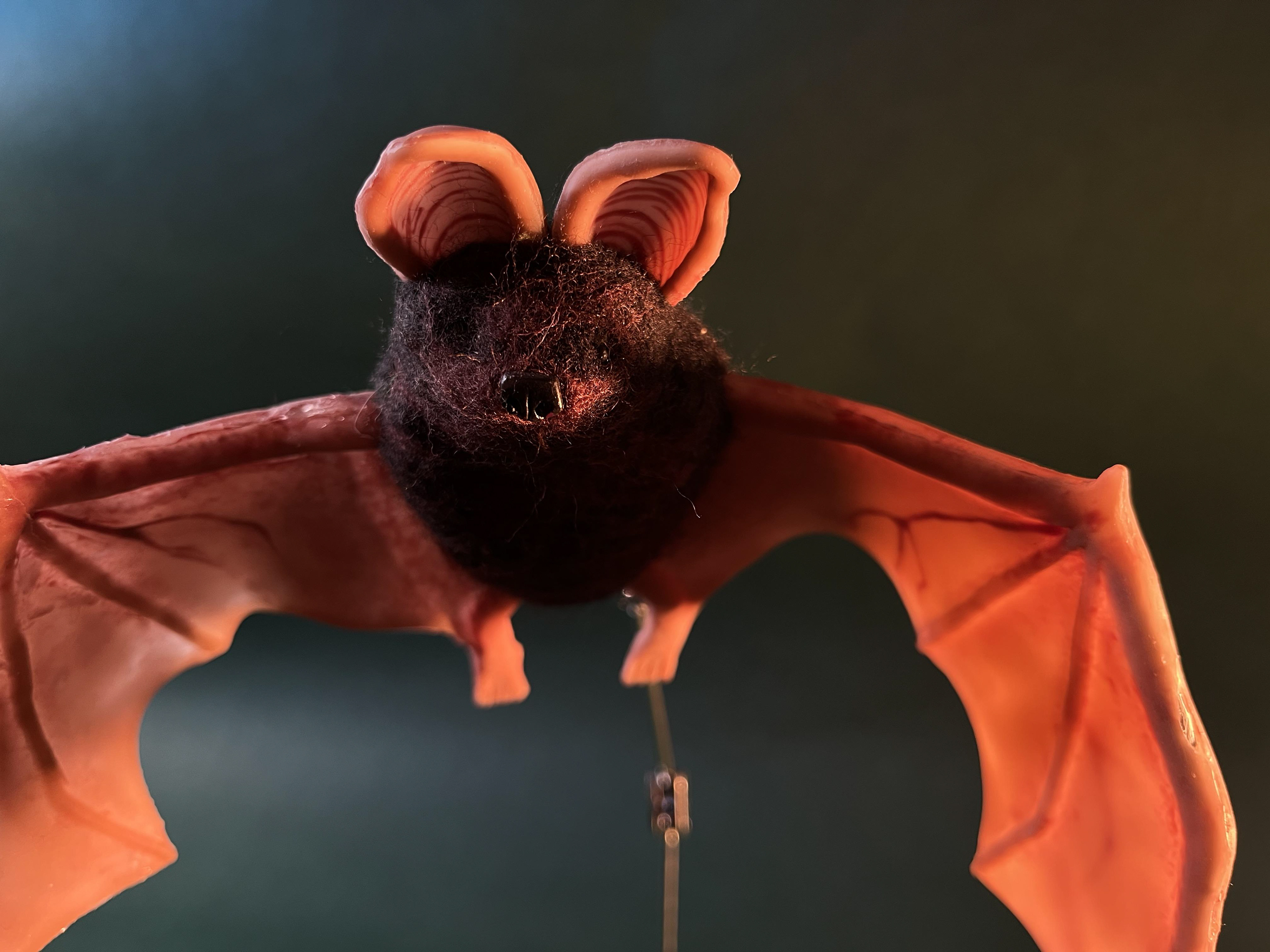
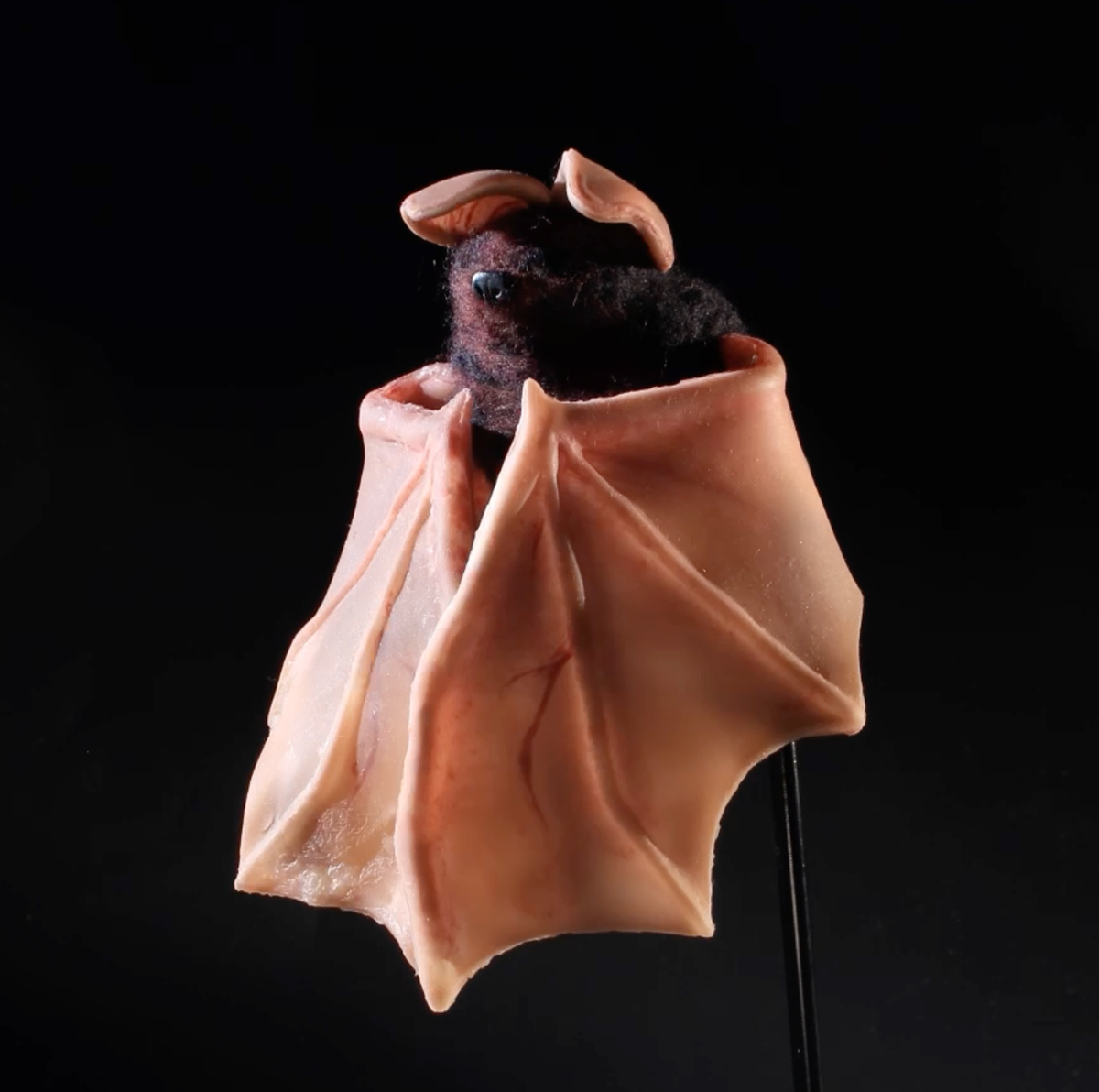
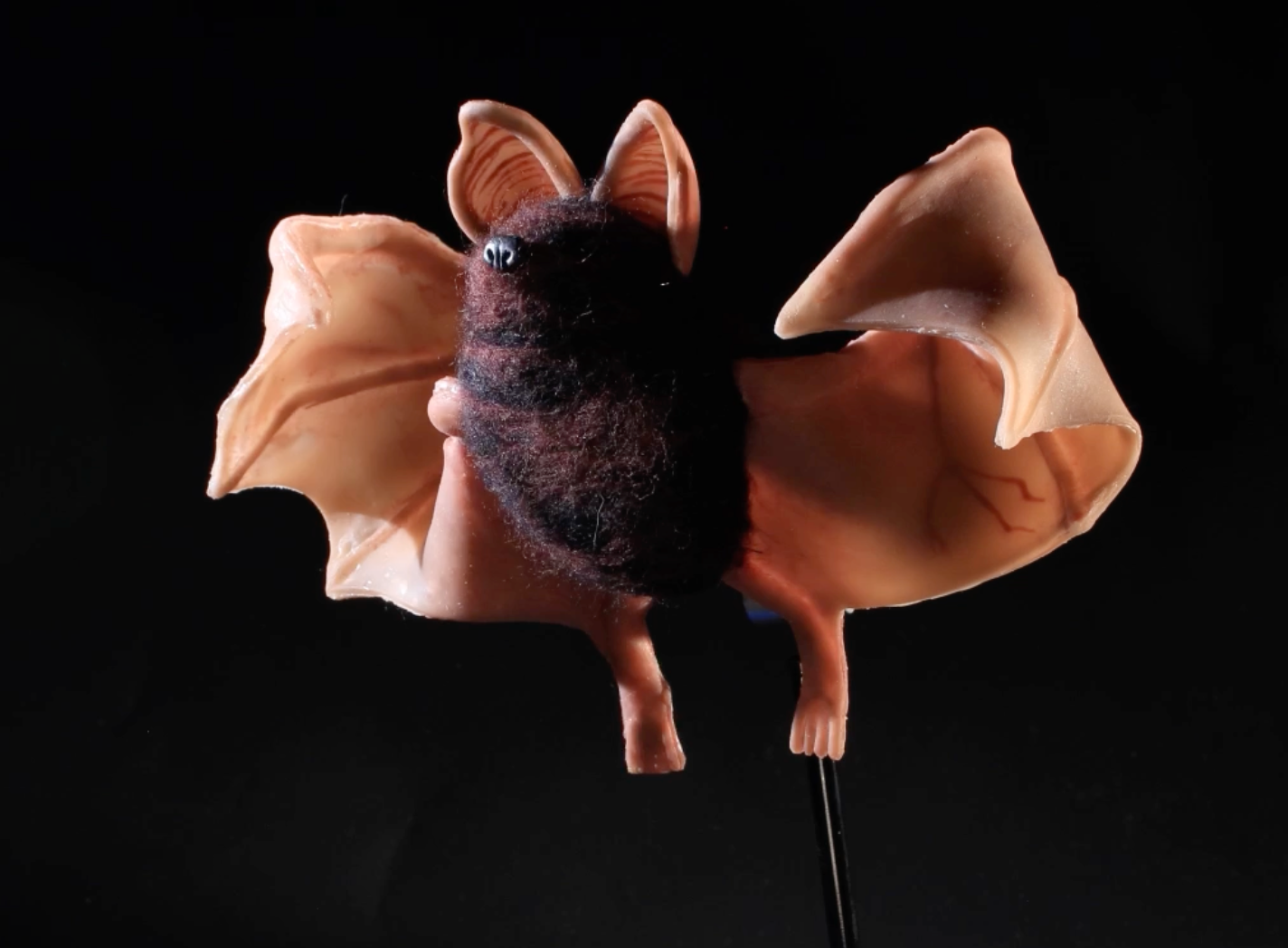
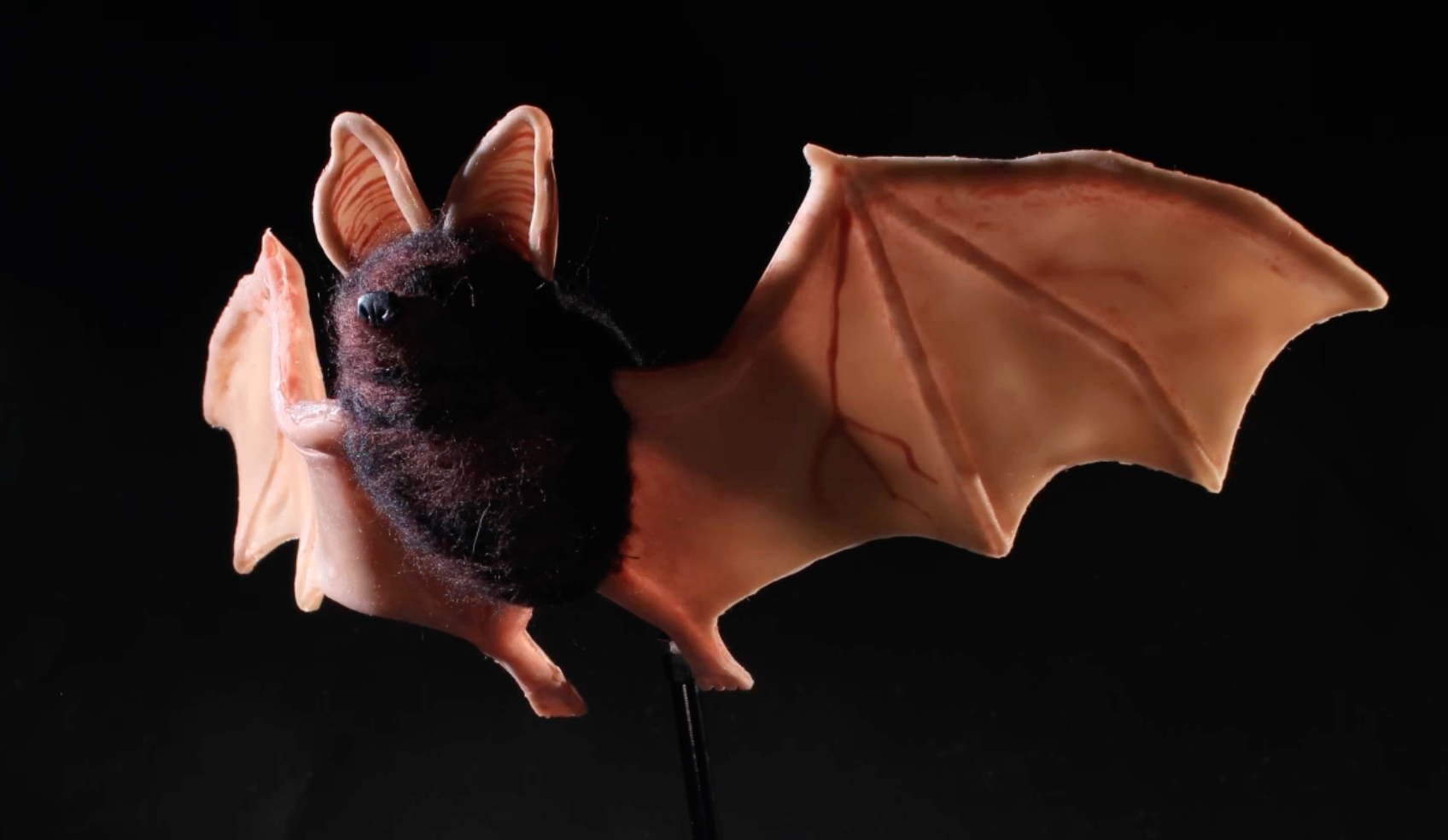
Misc. Puppet Scale Sheets:
